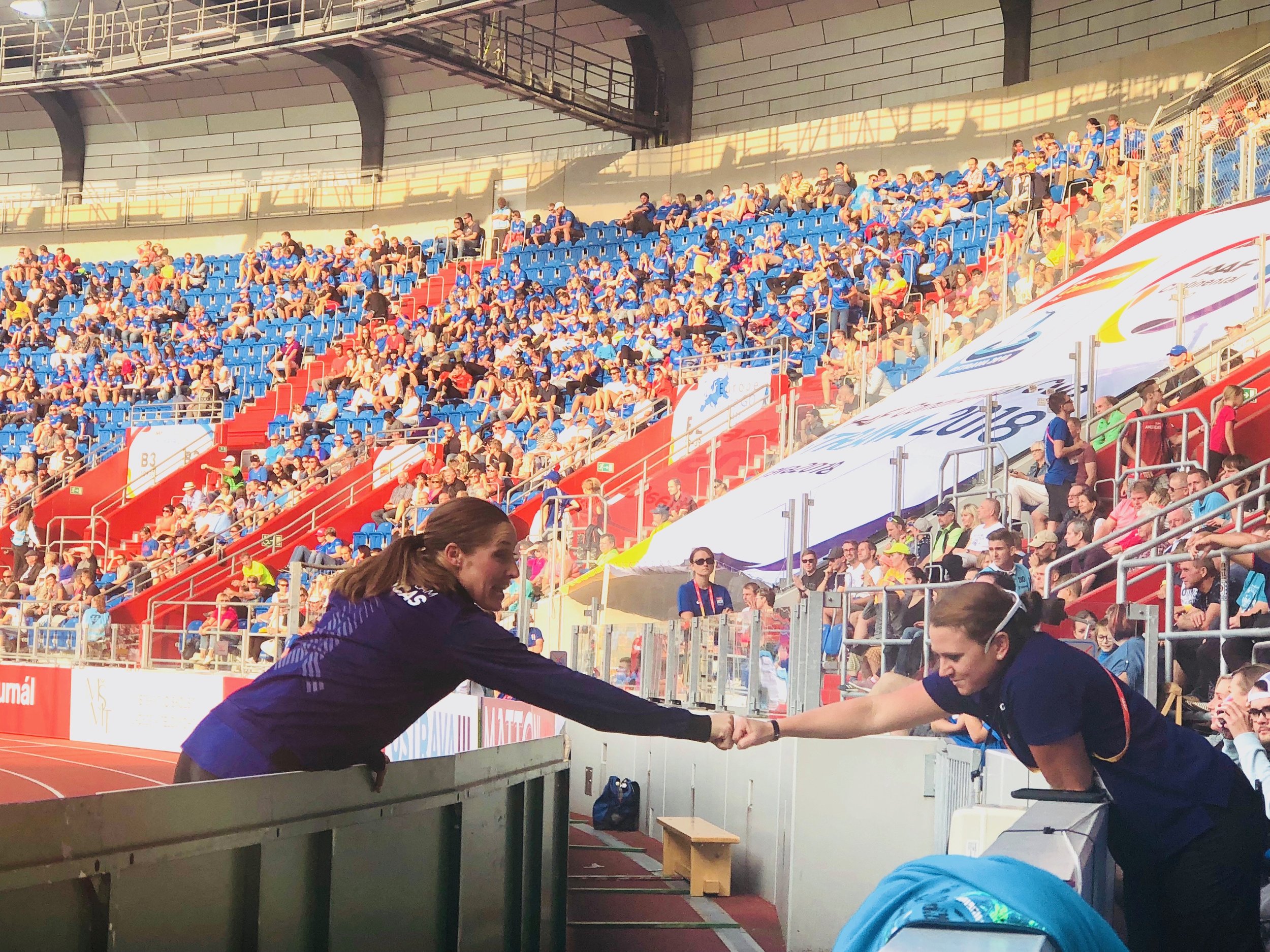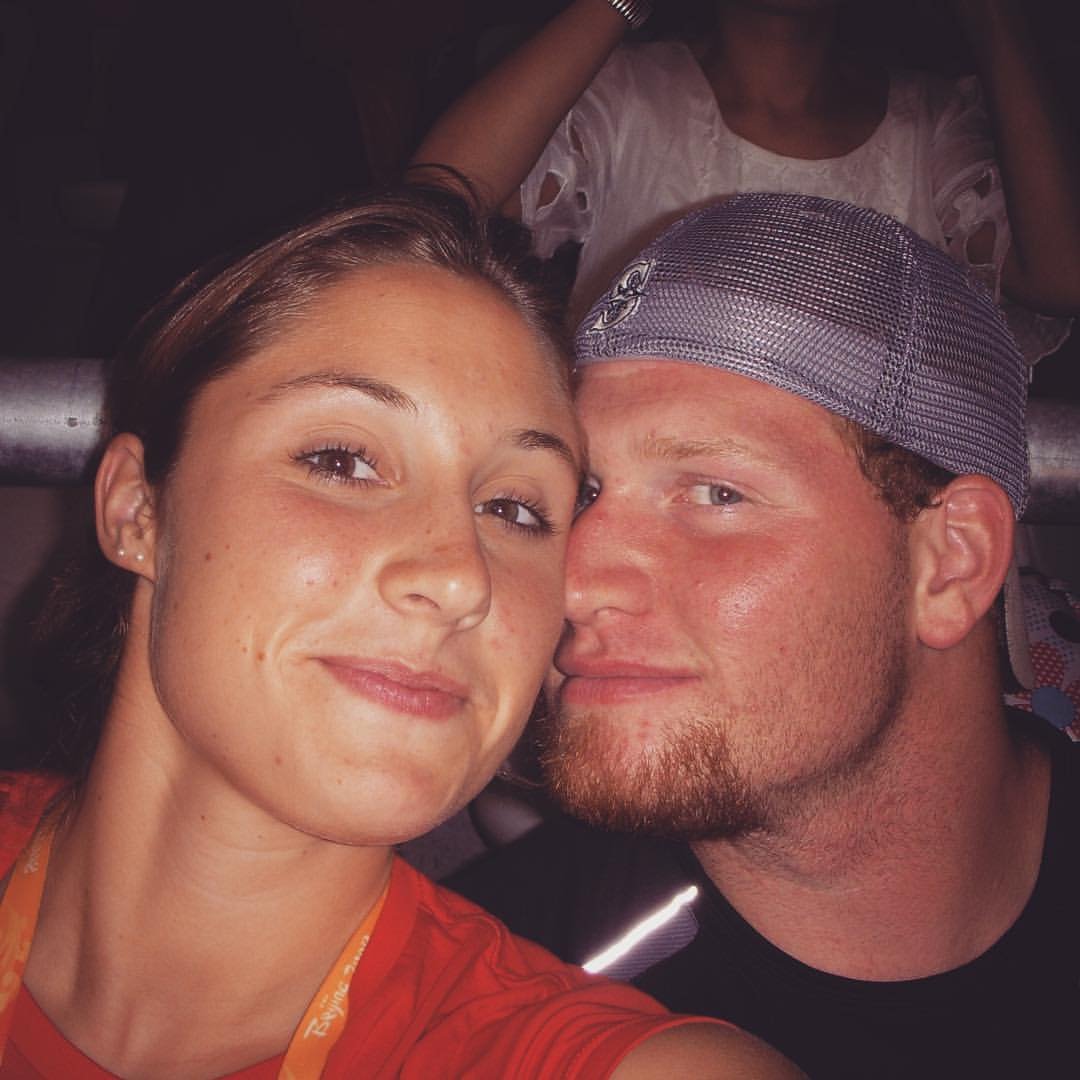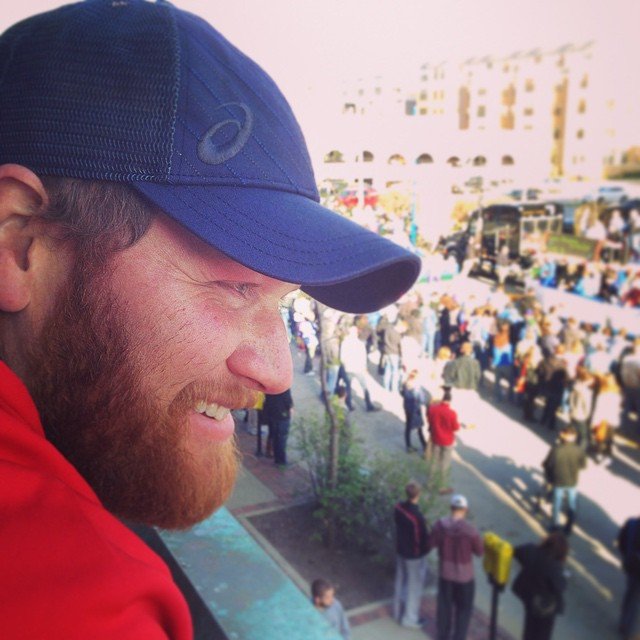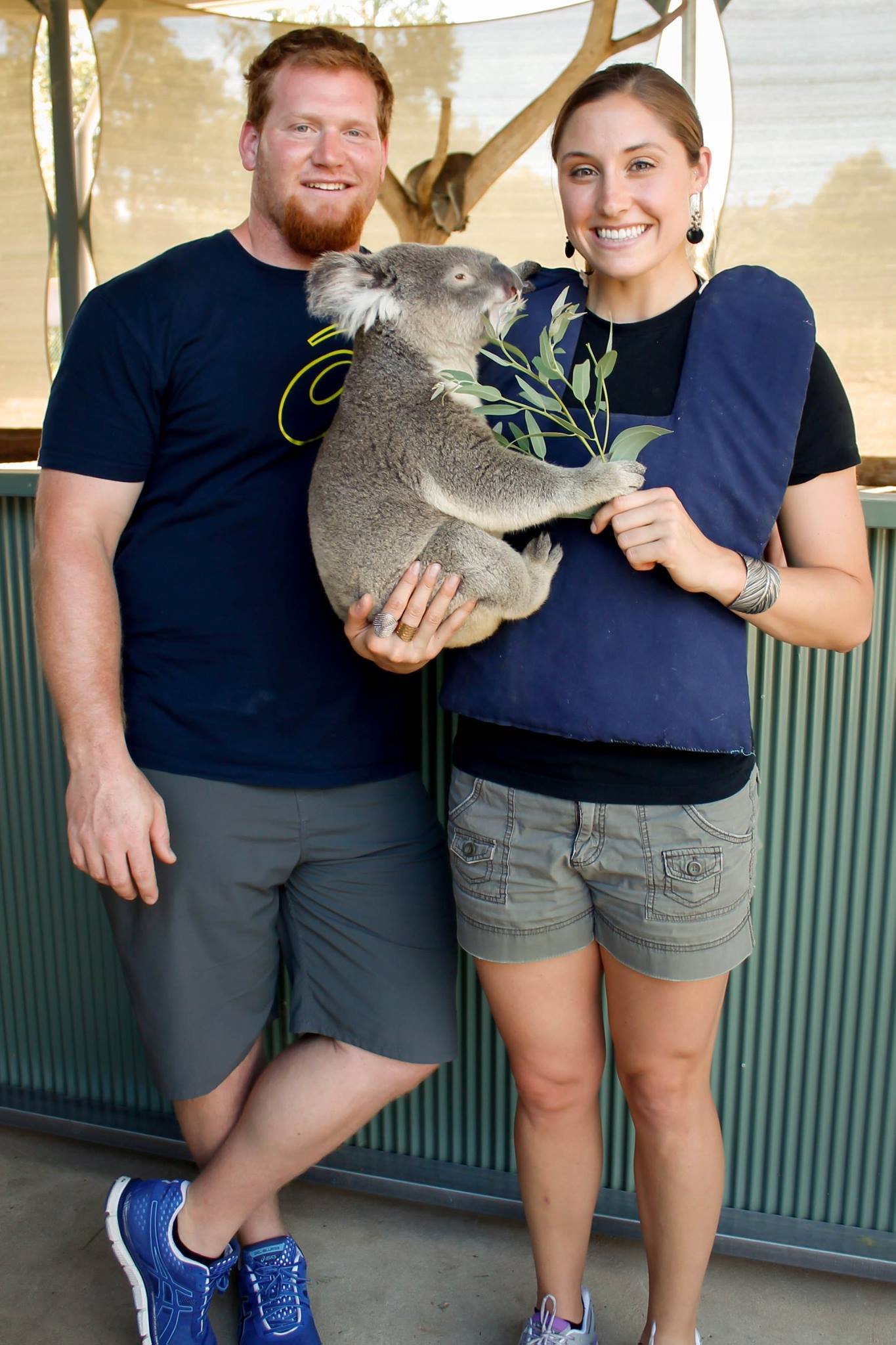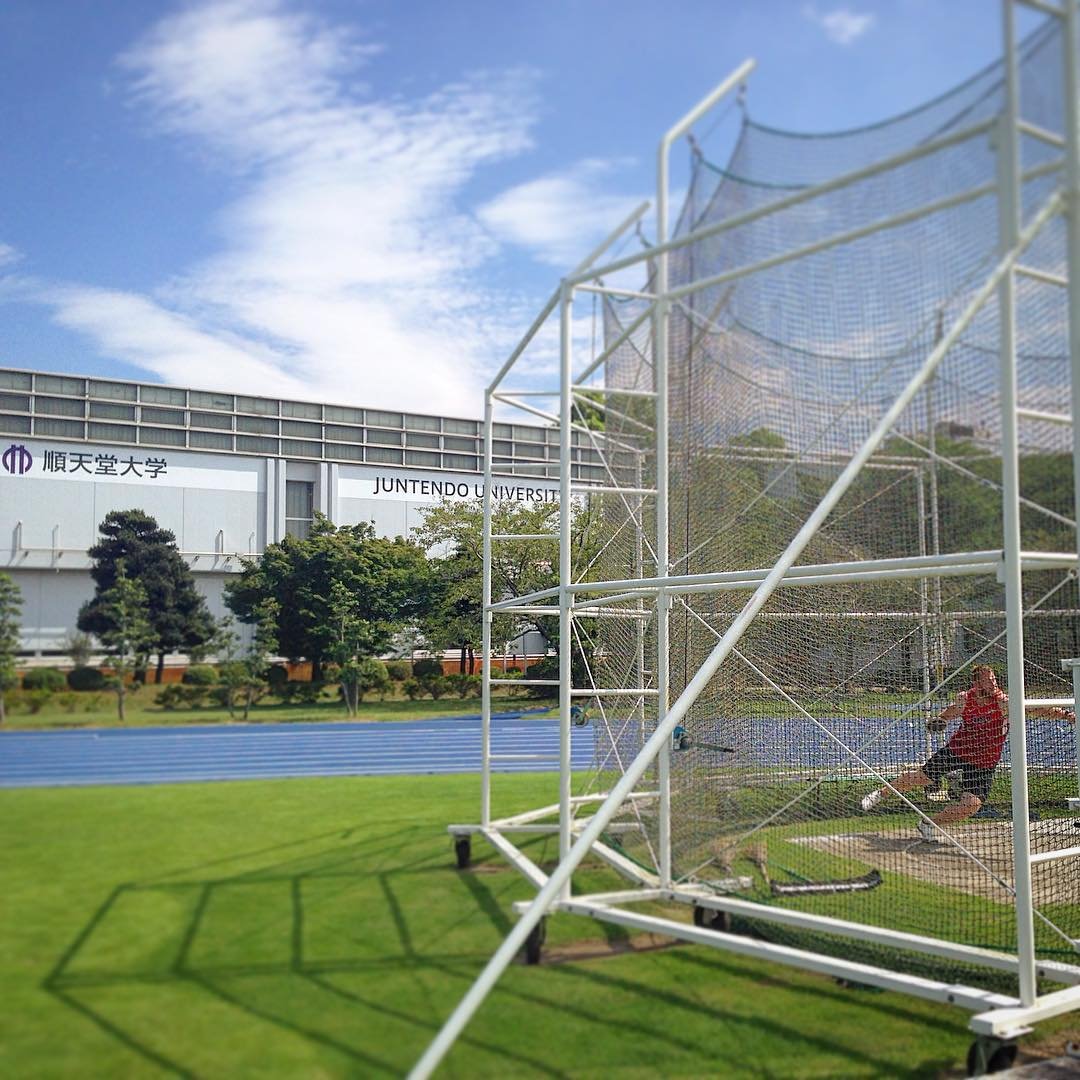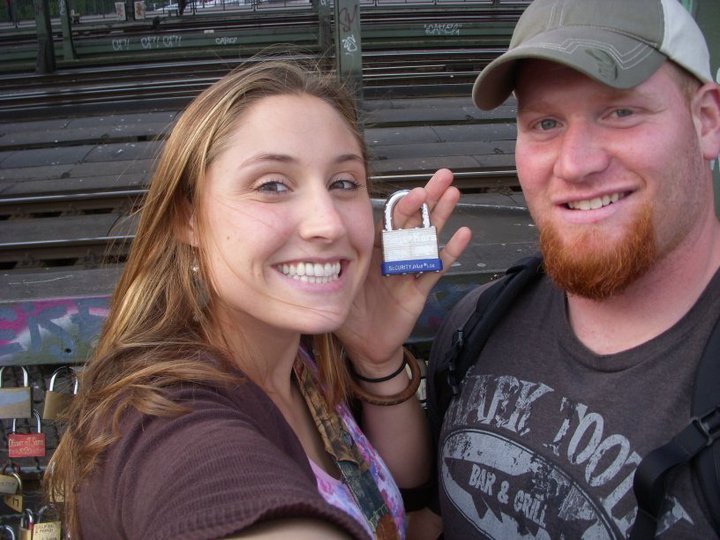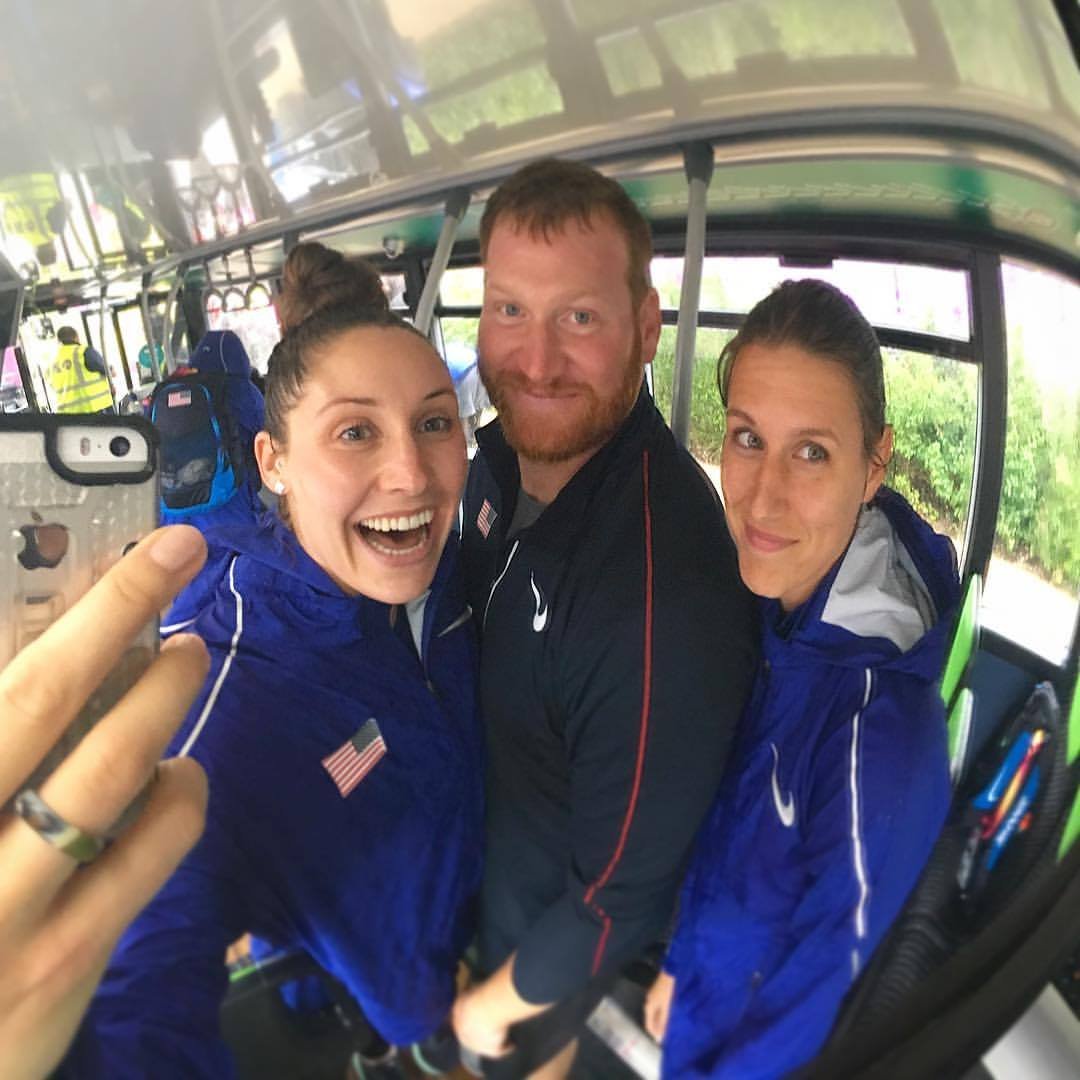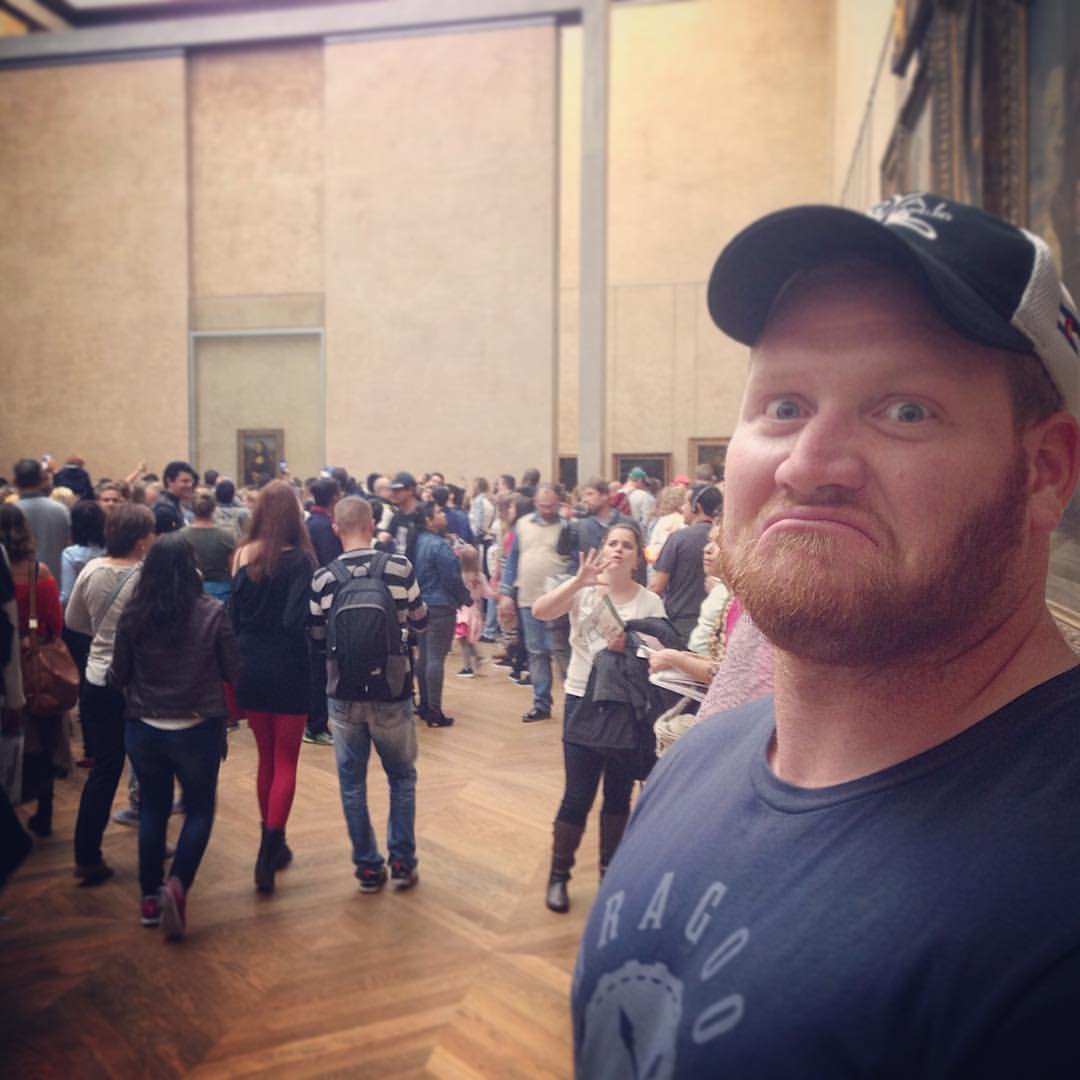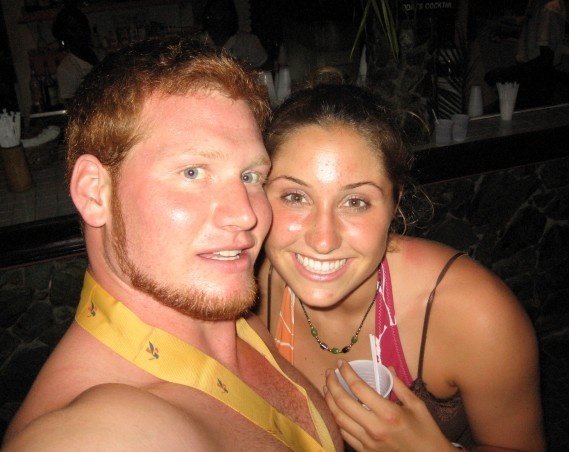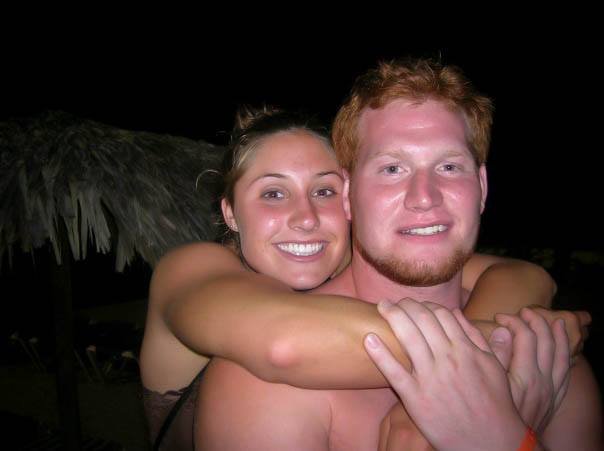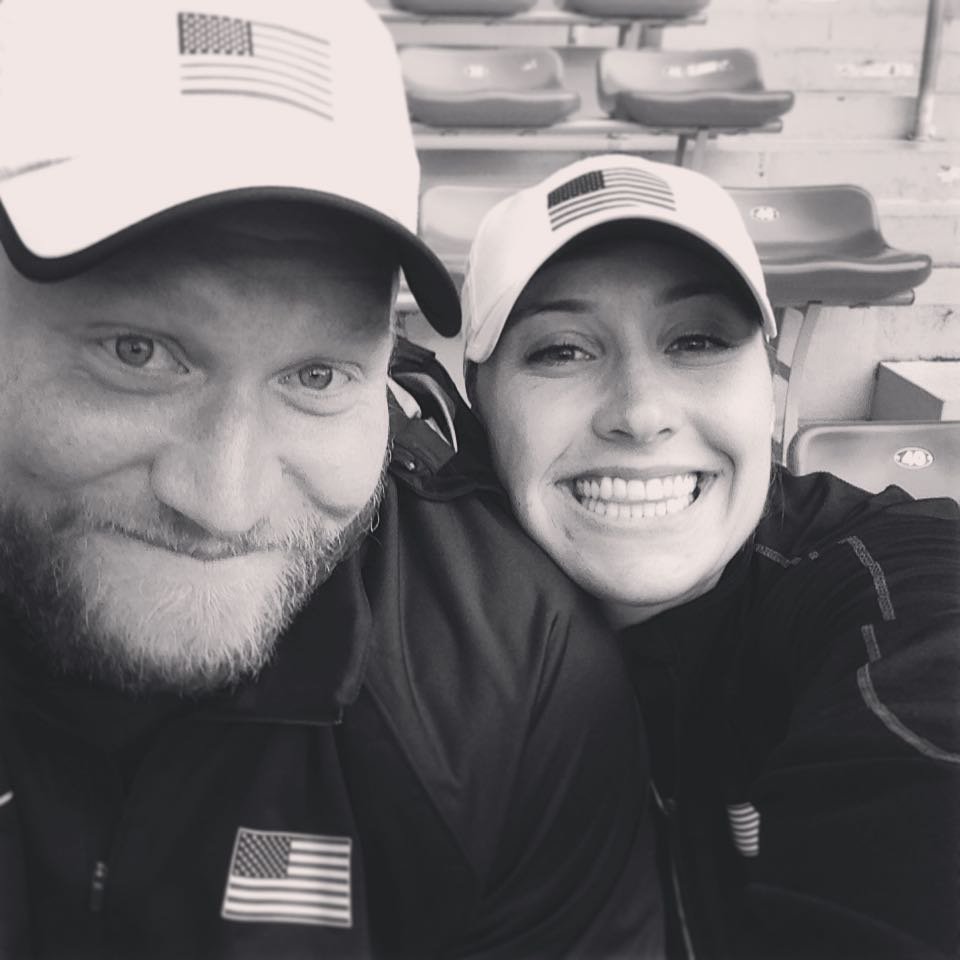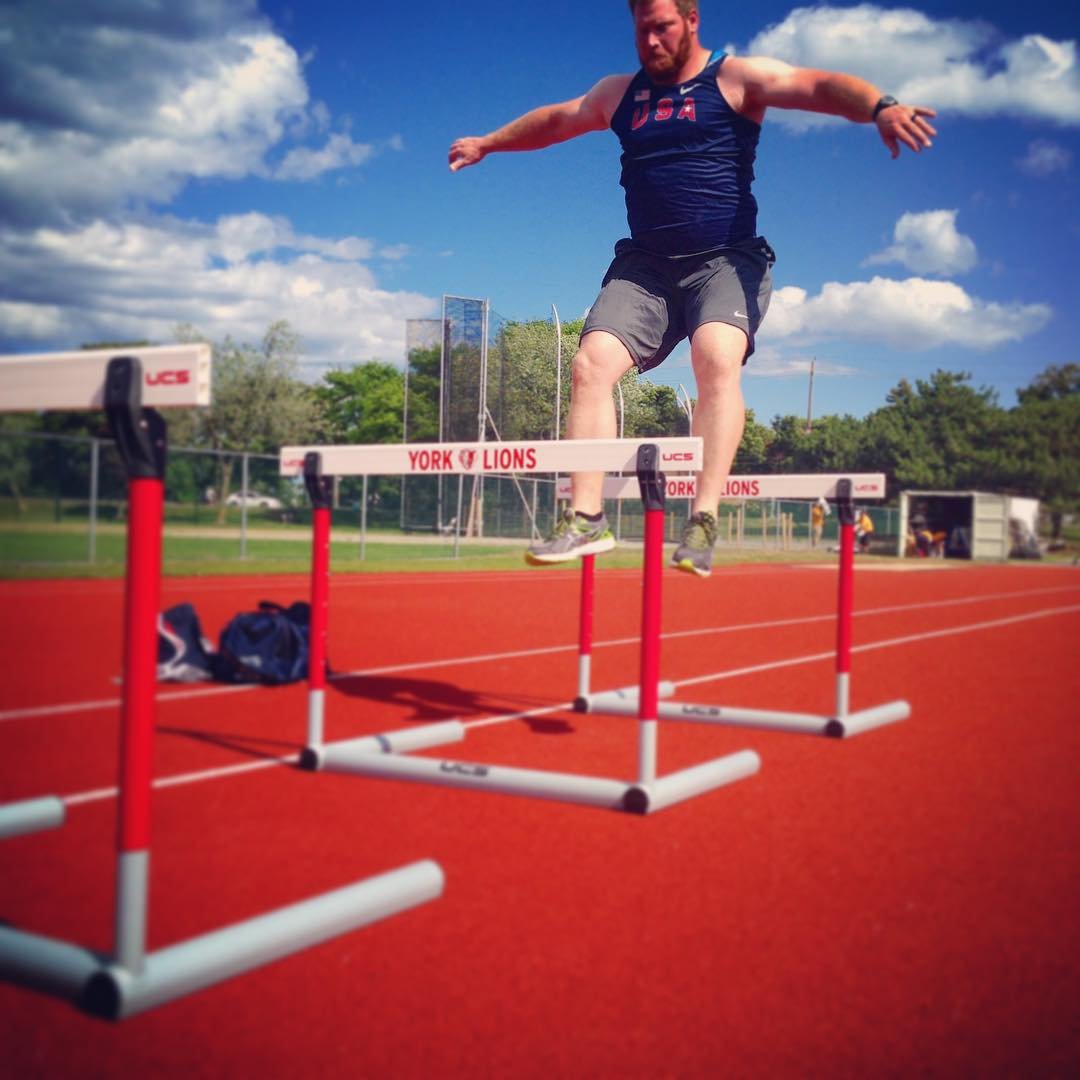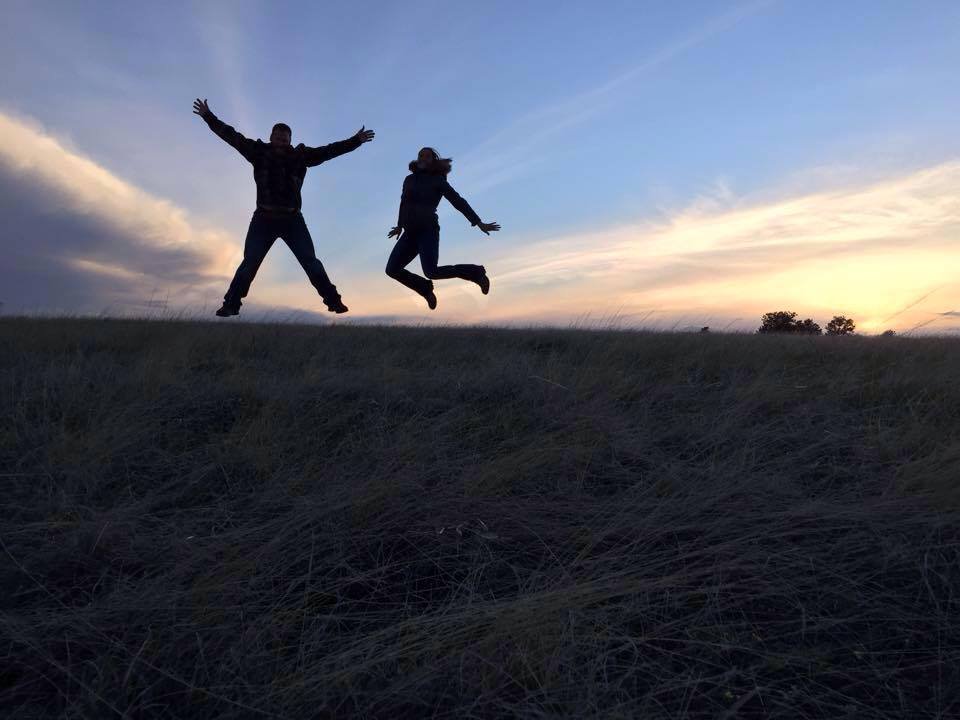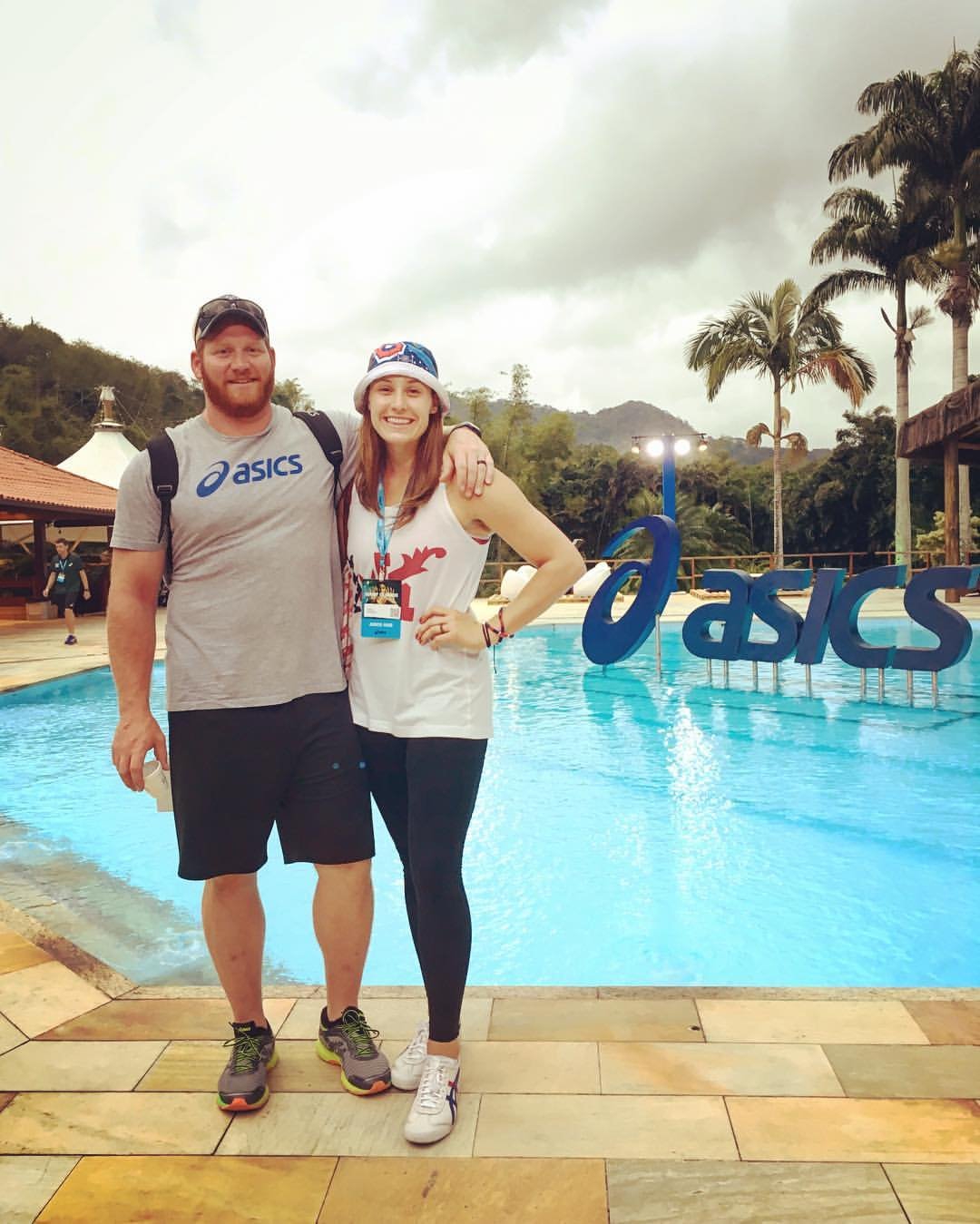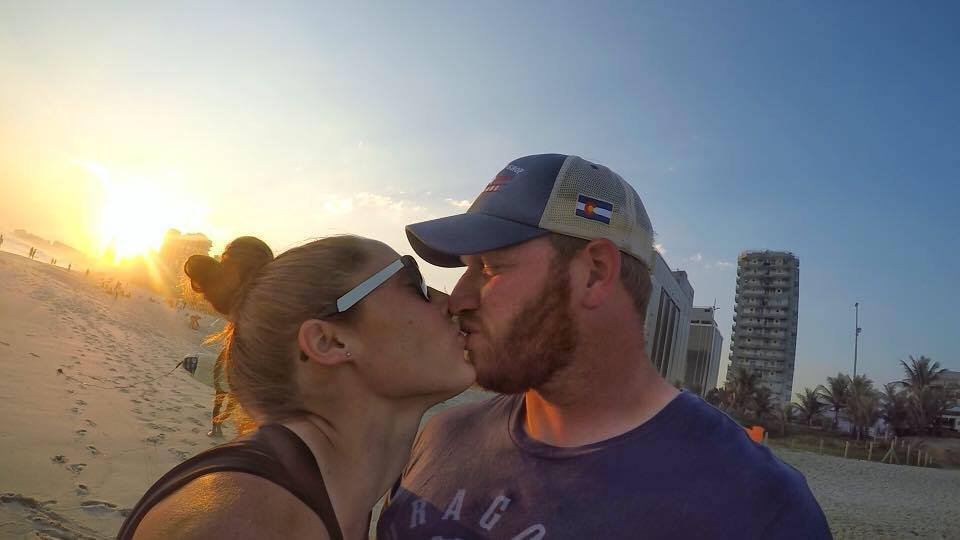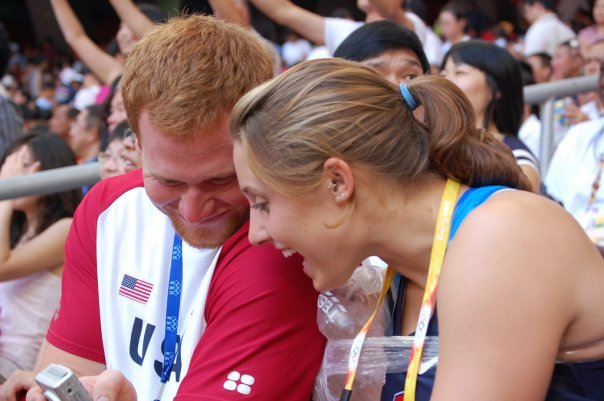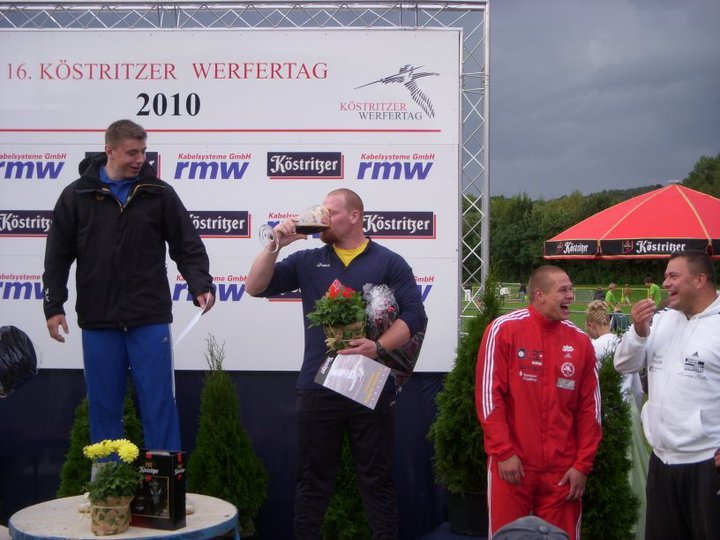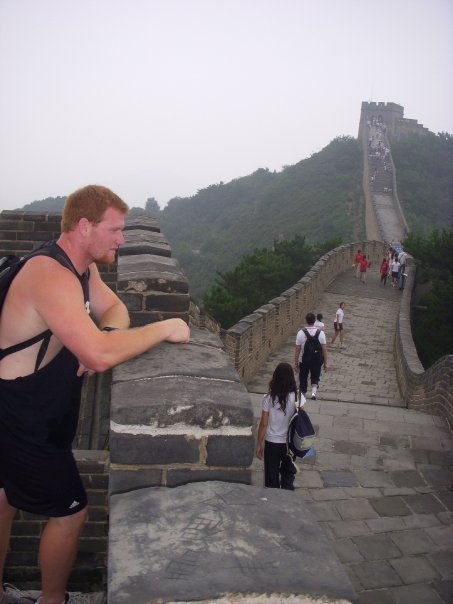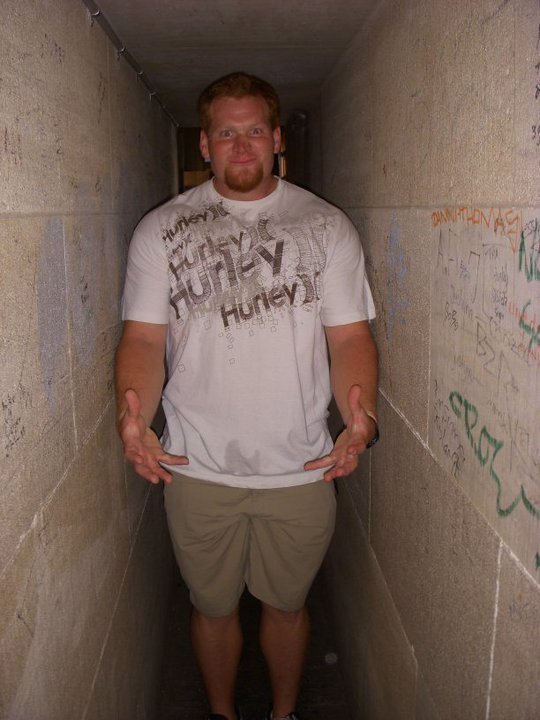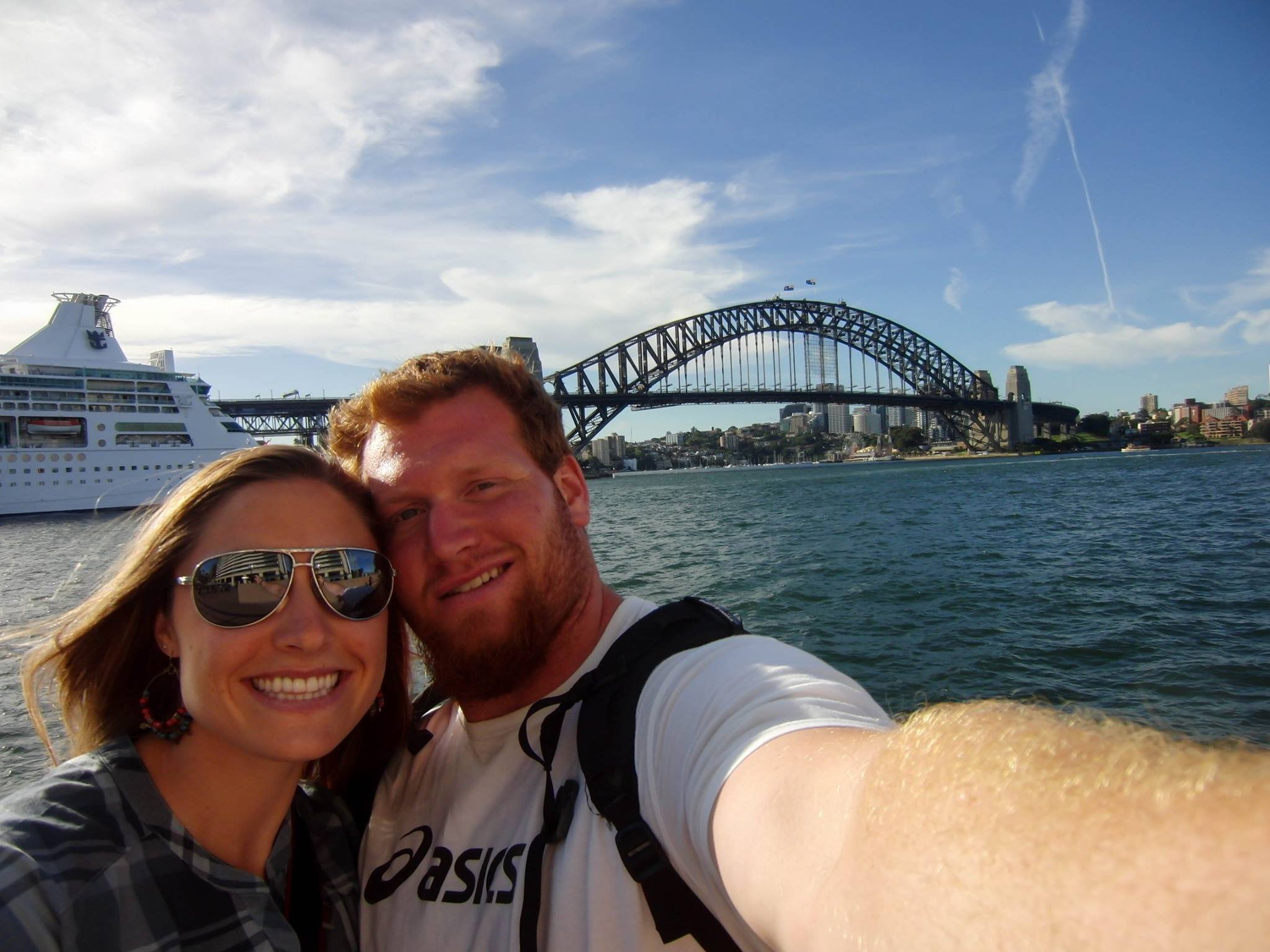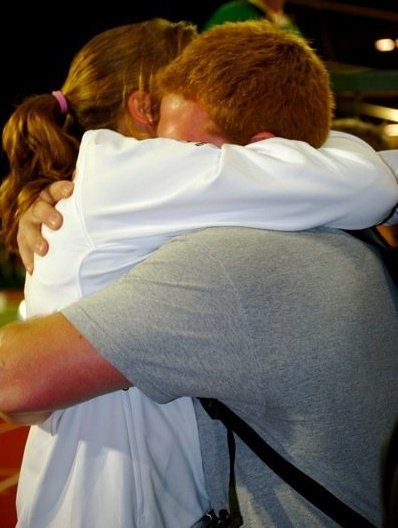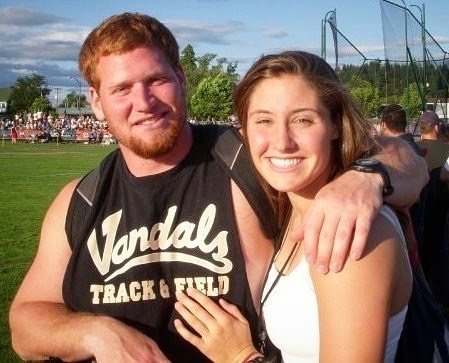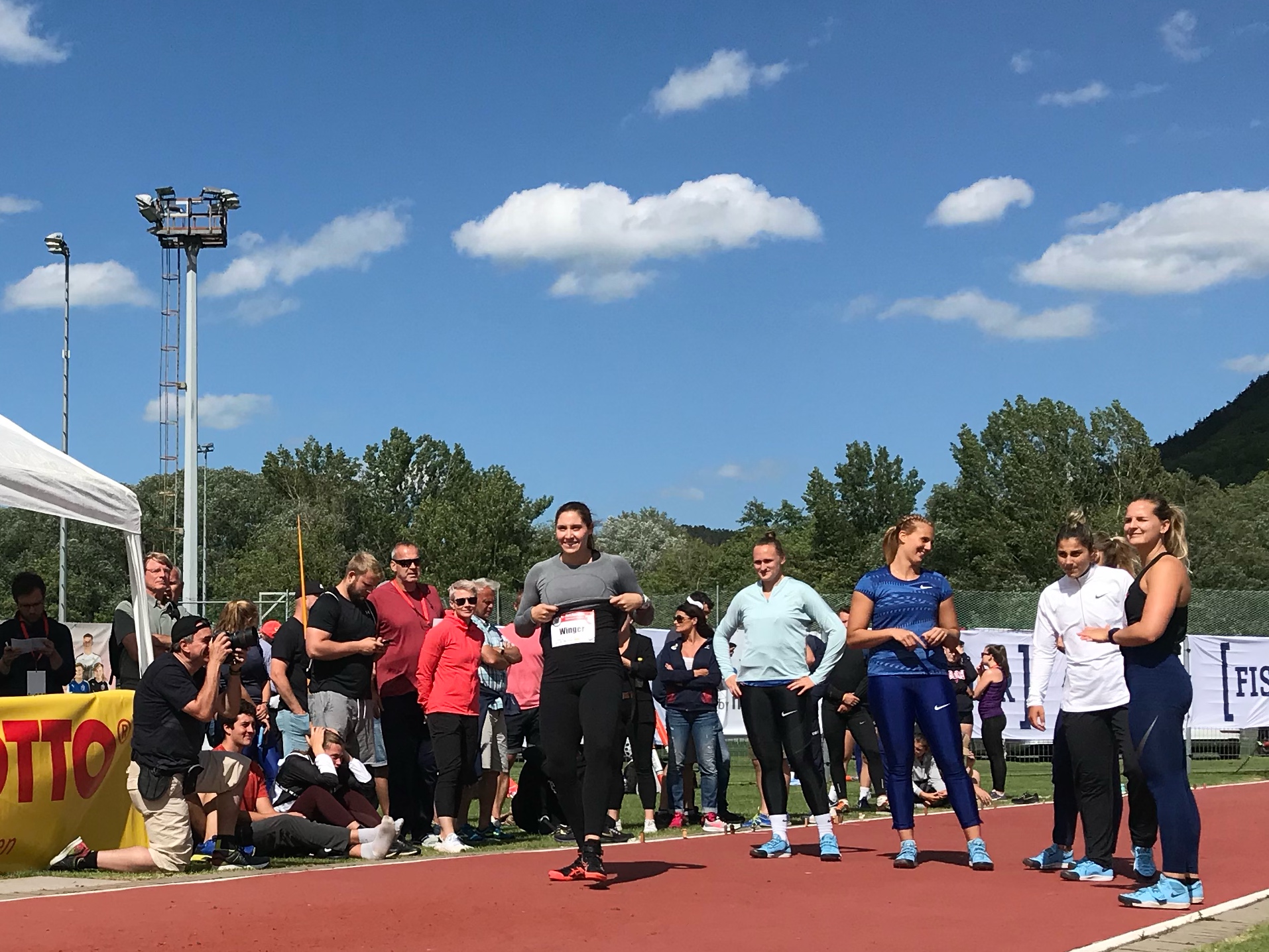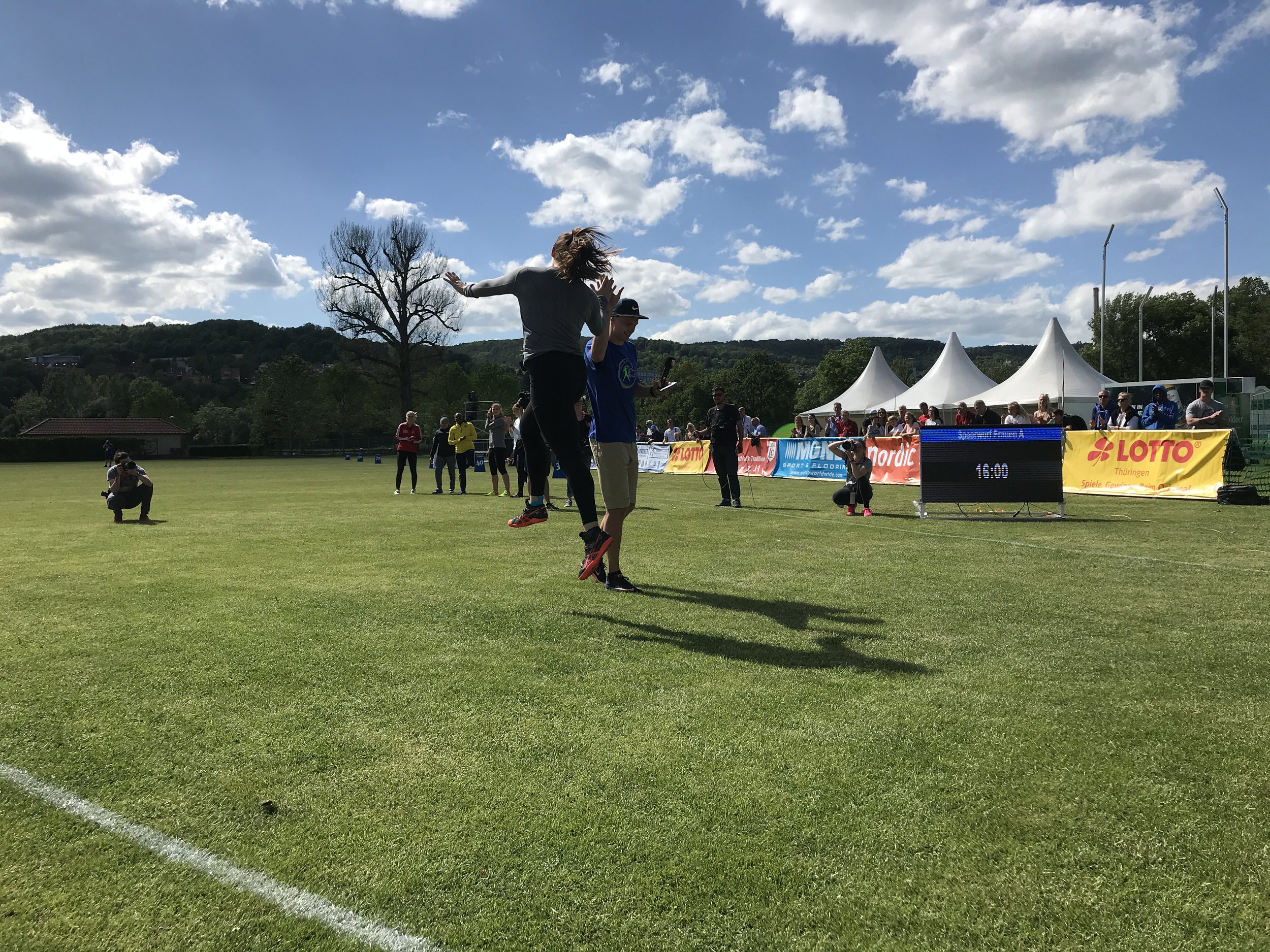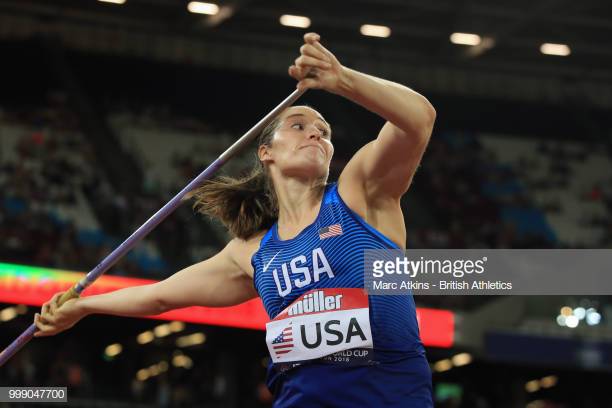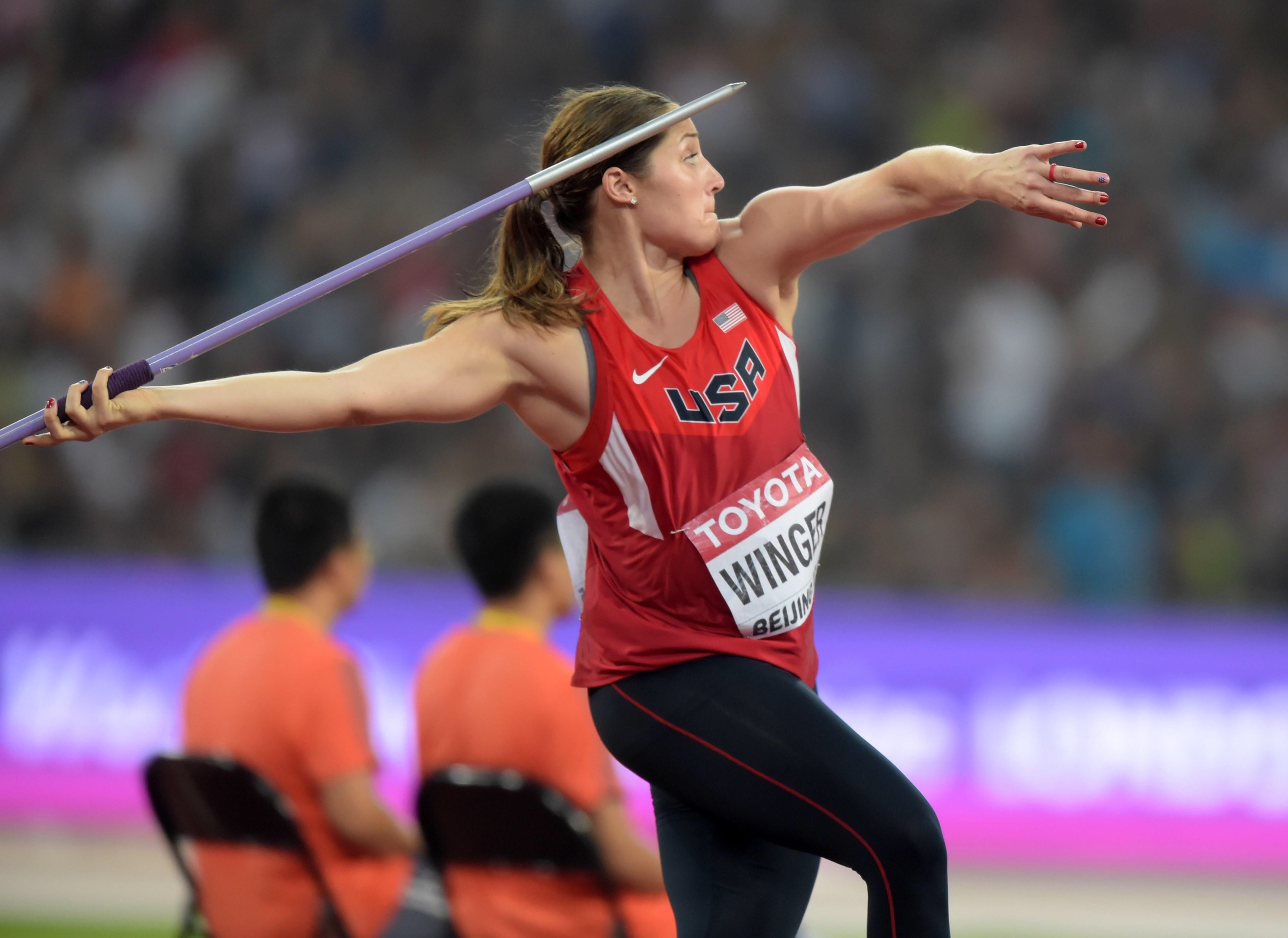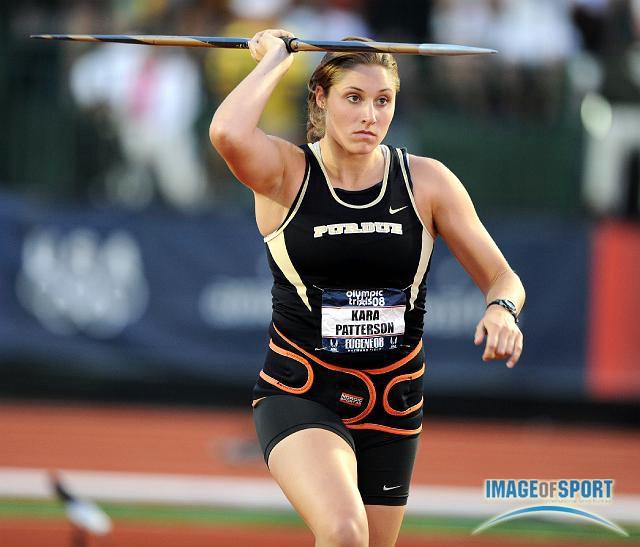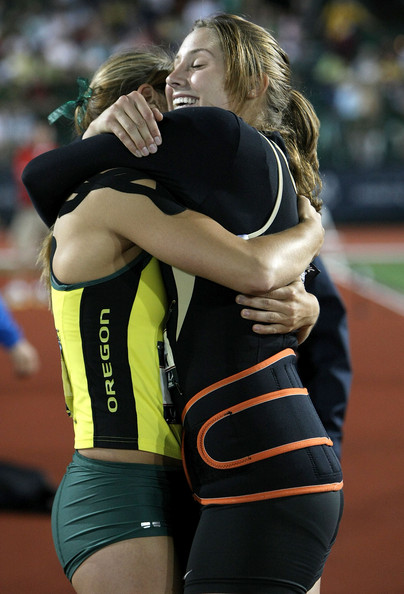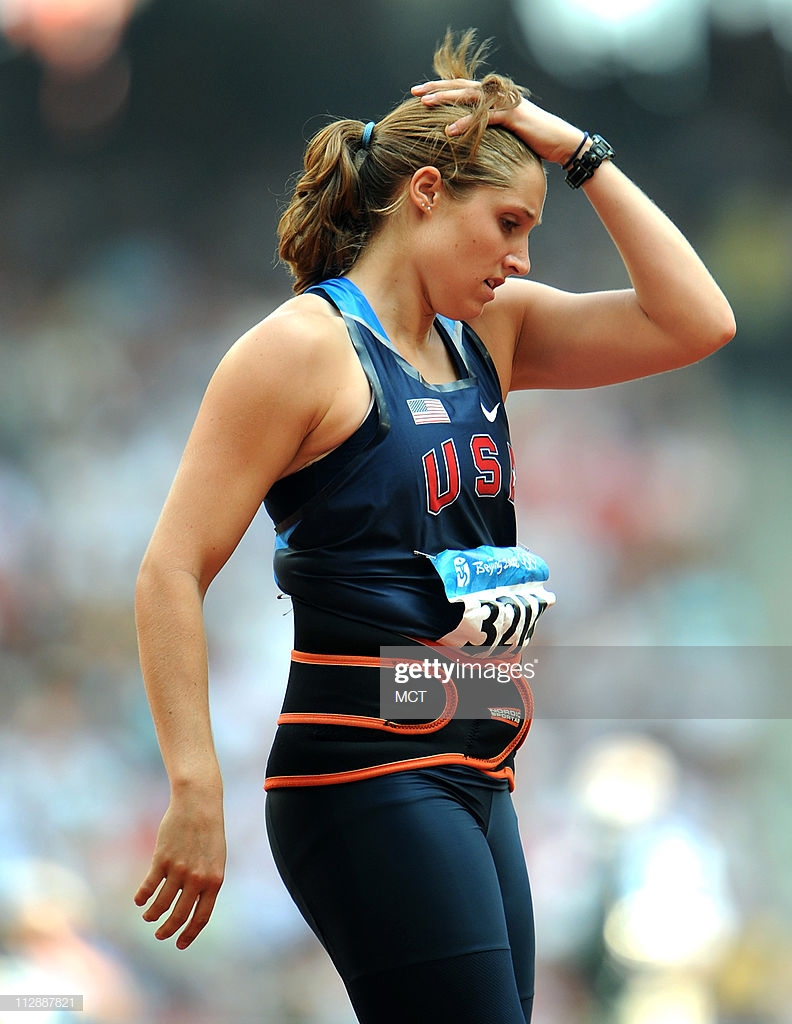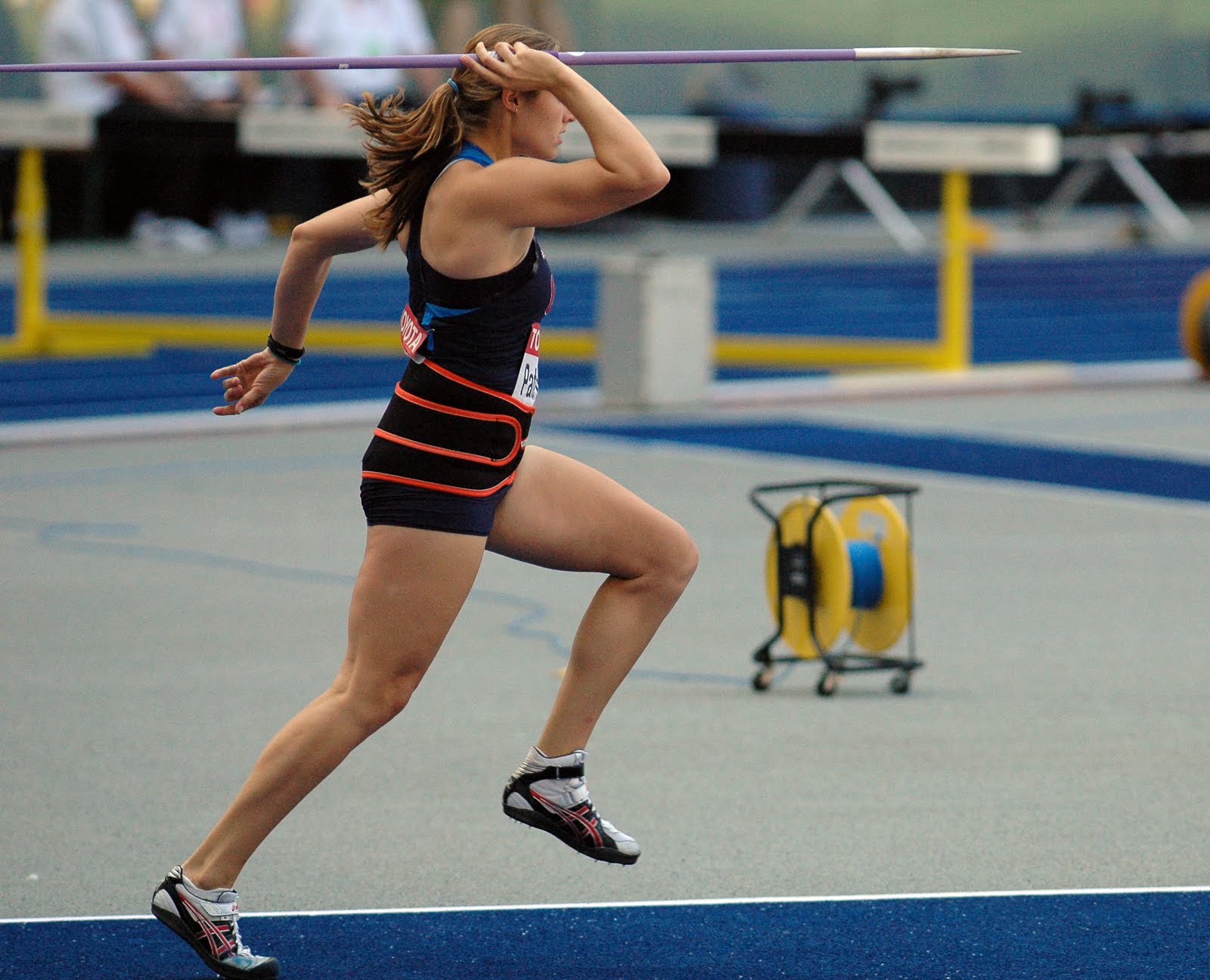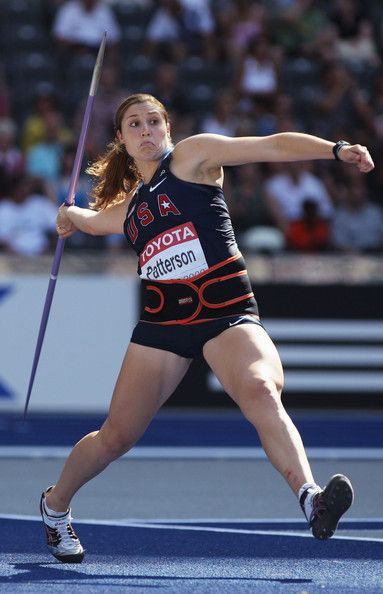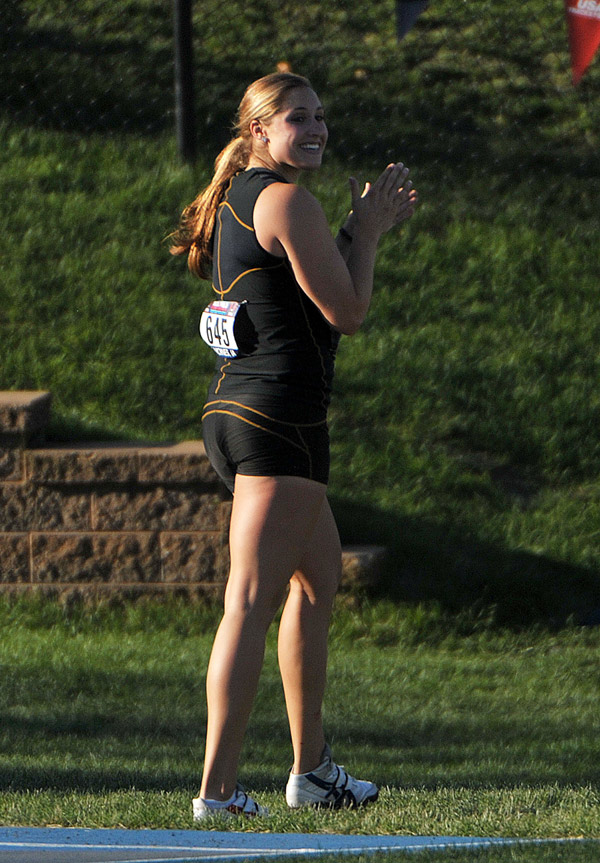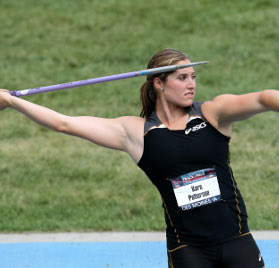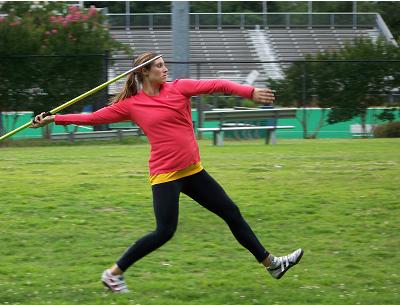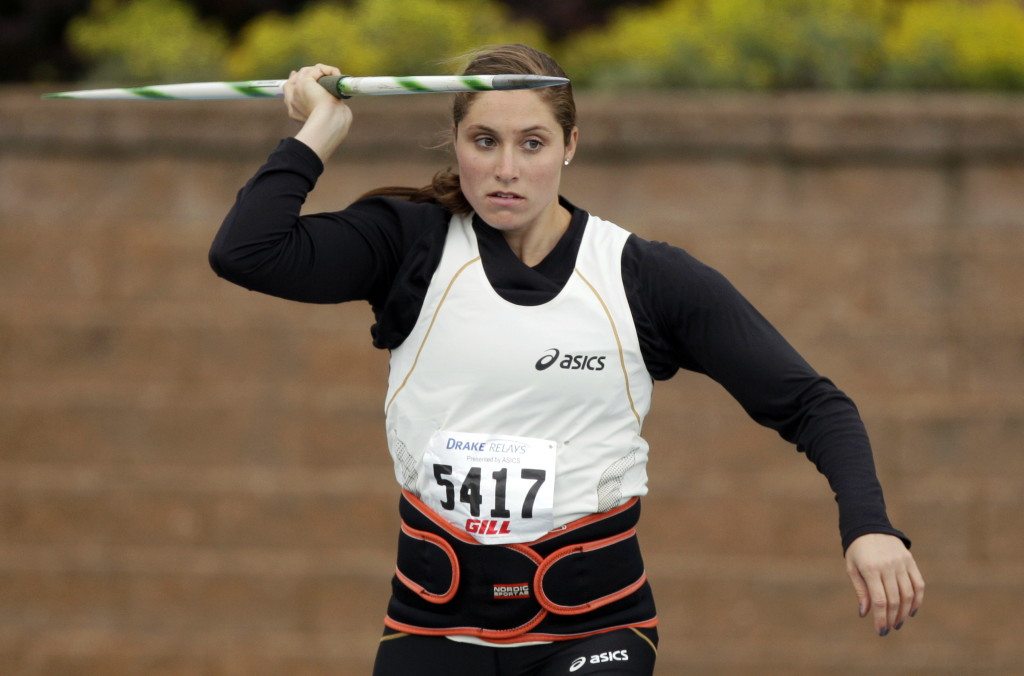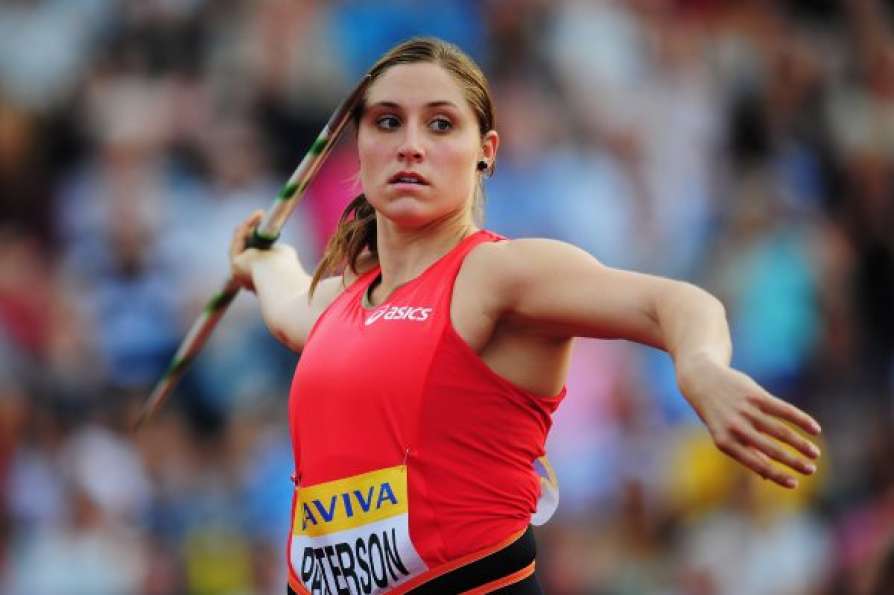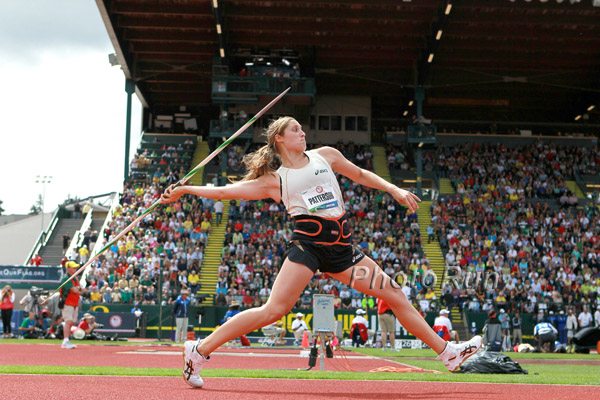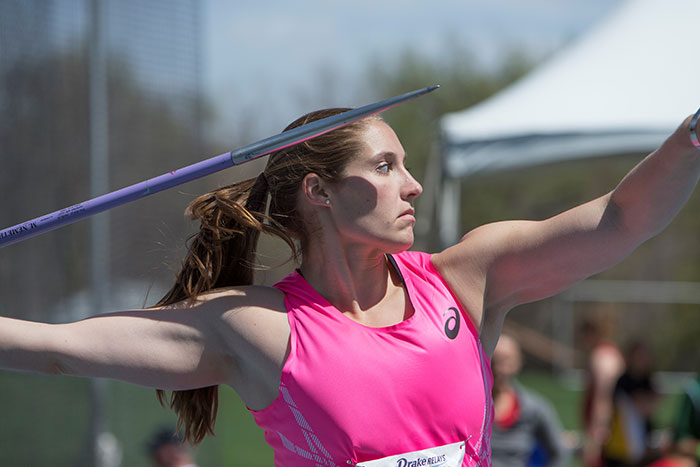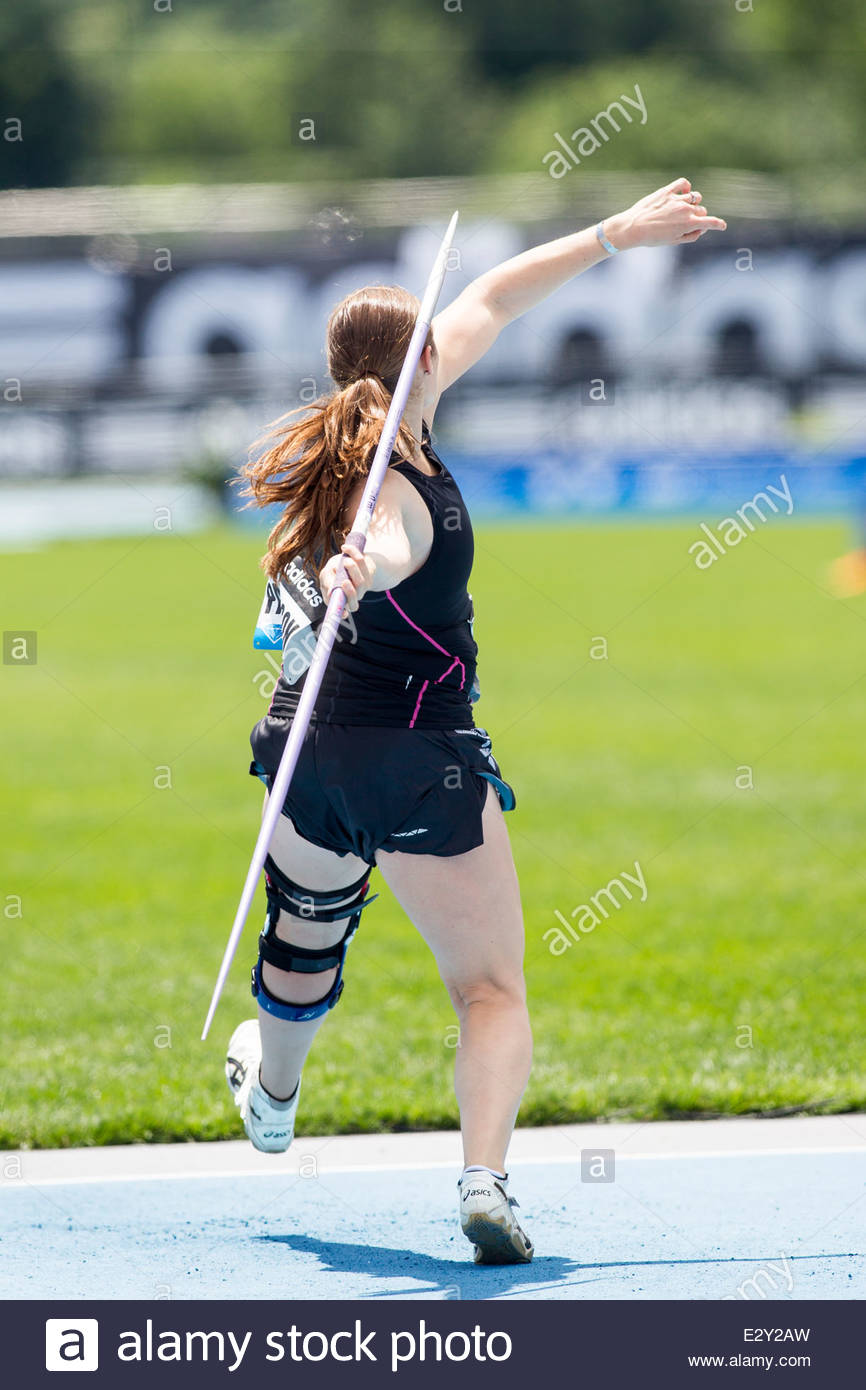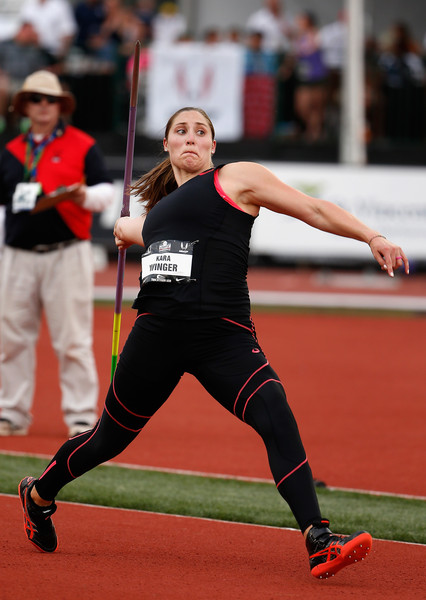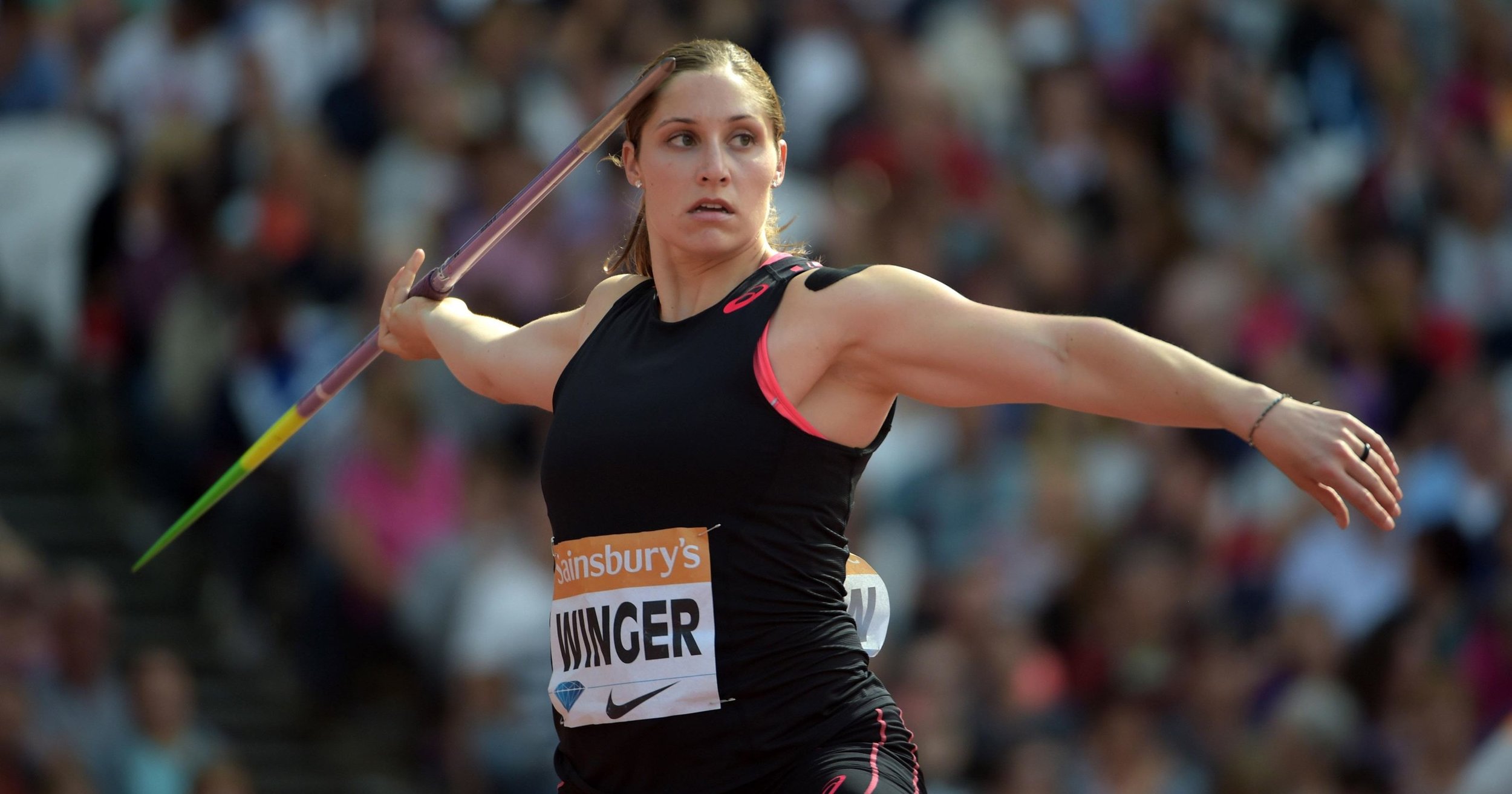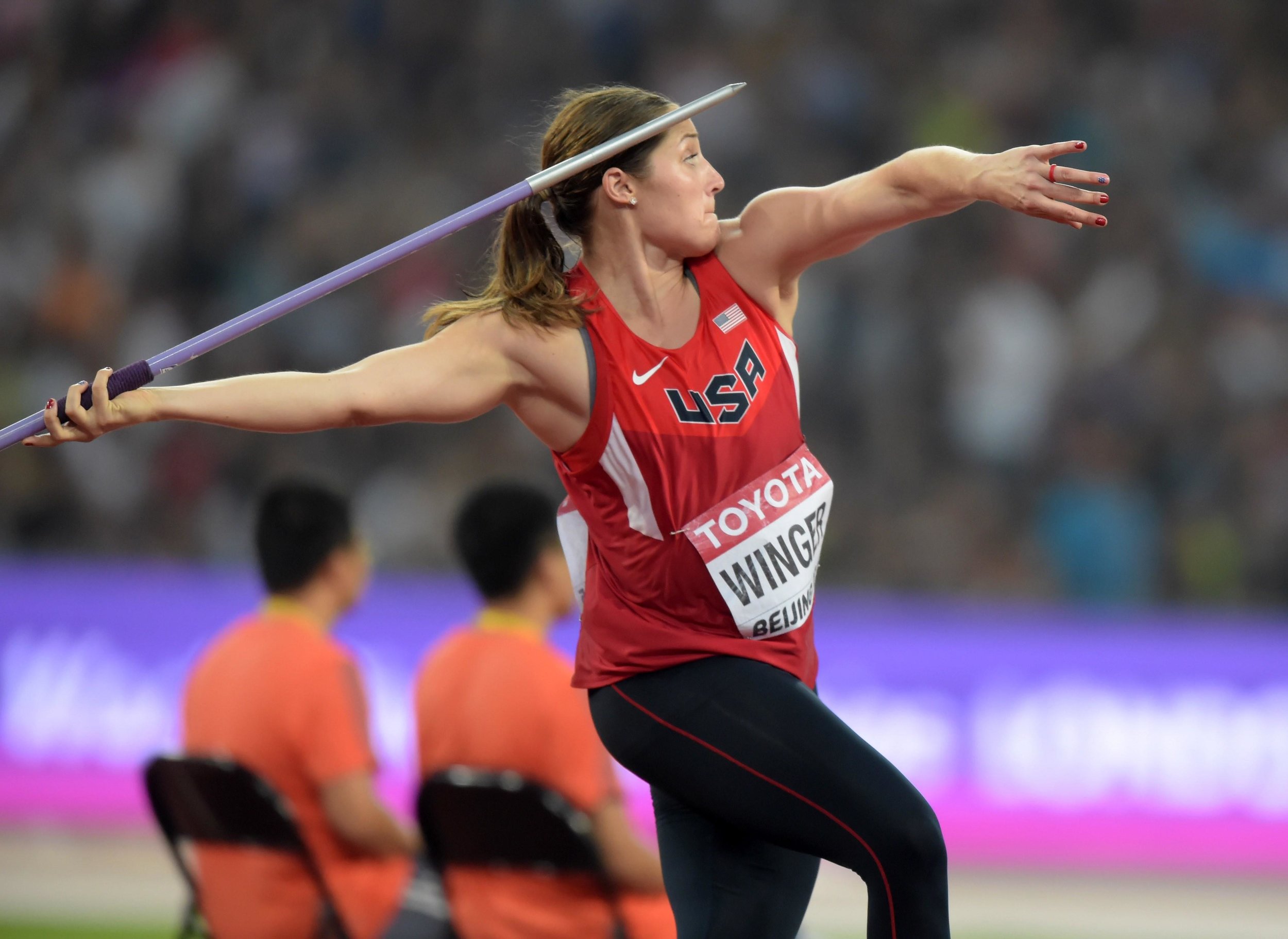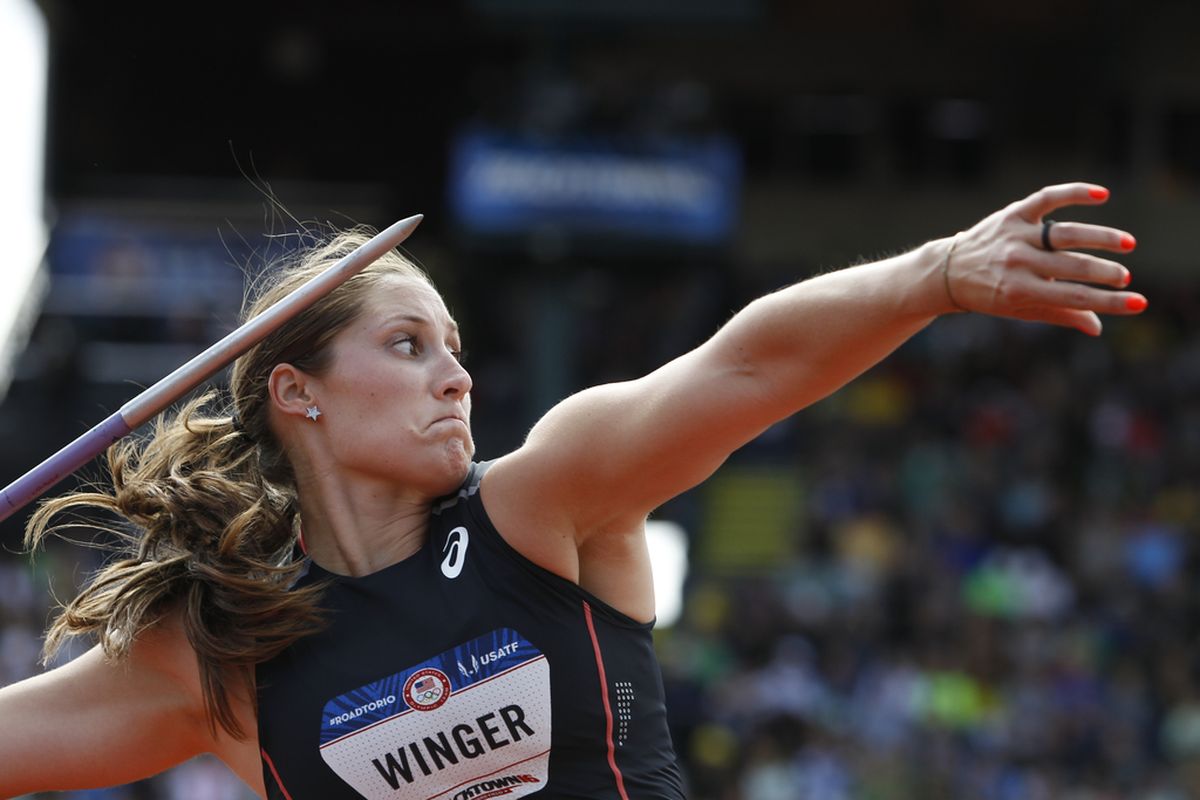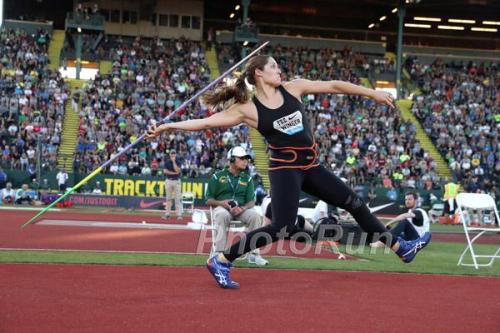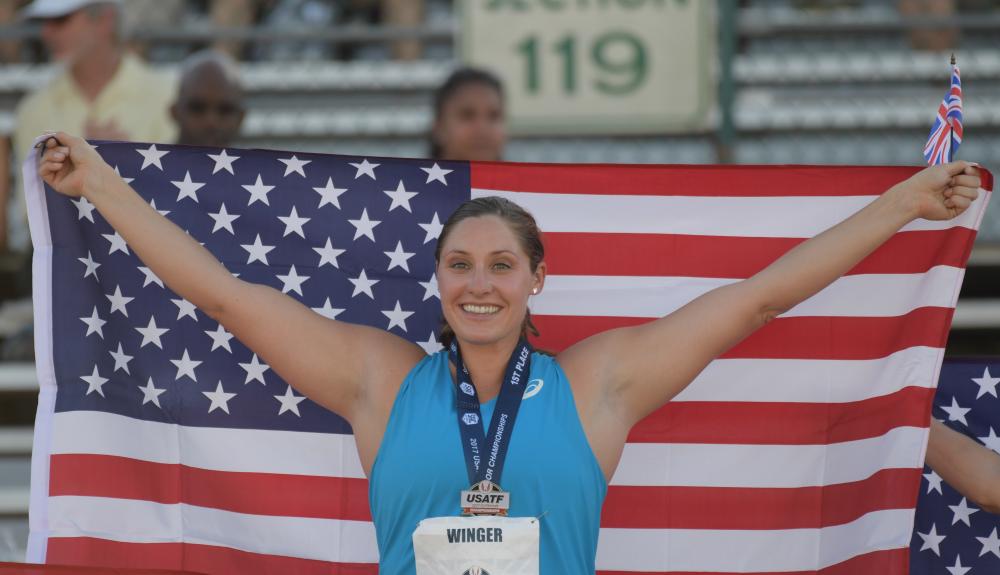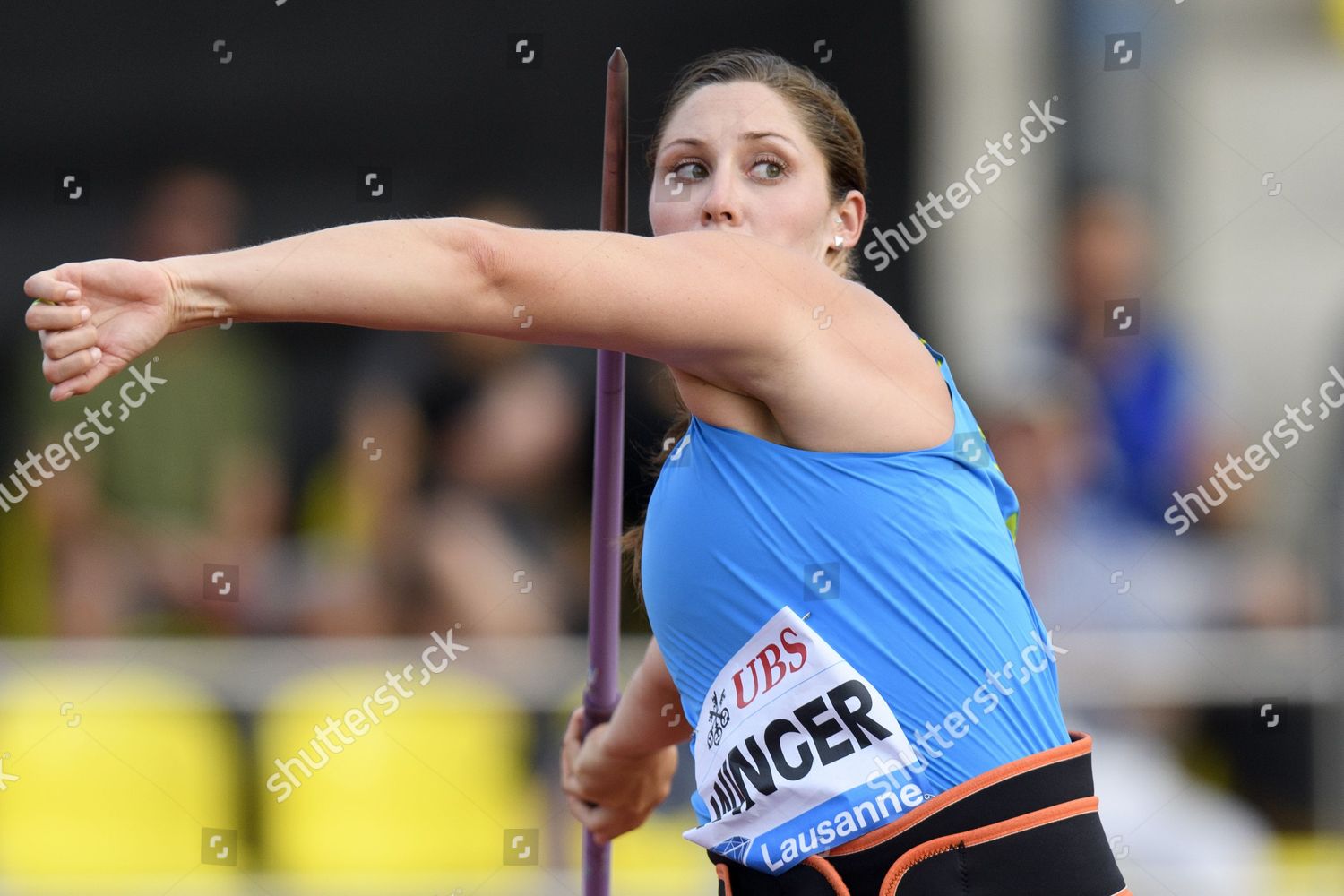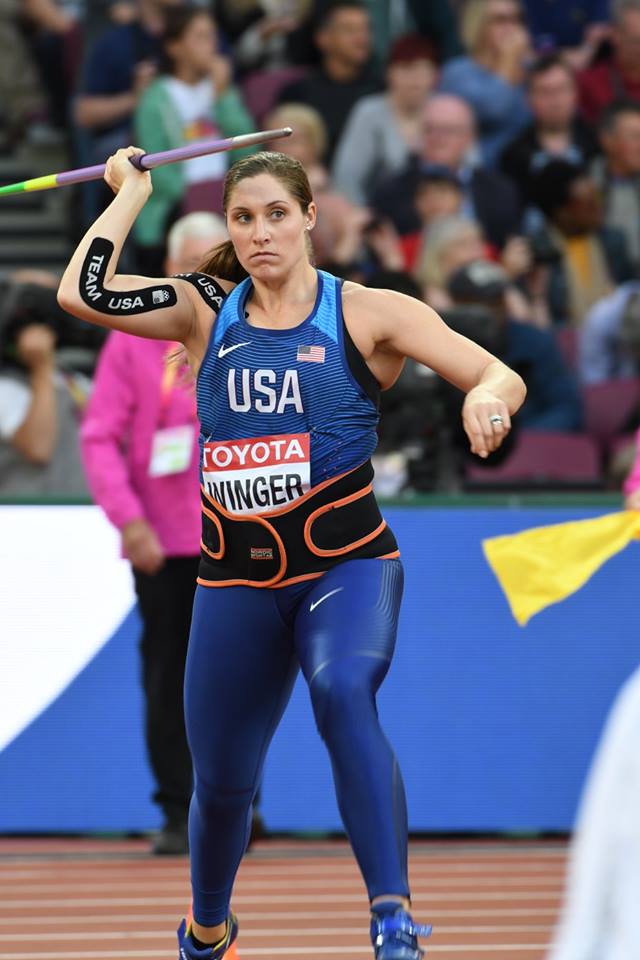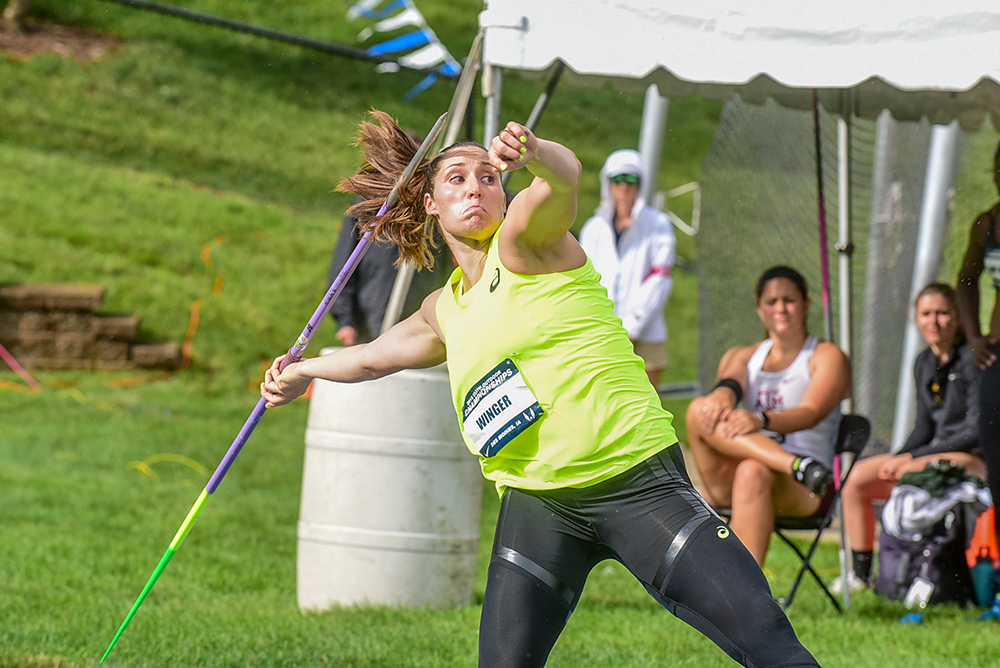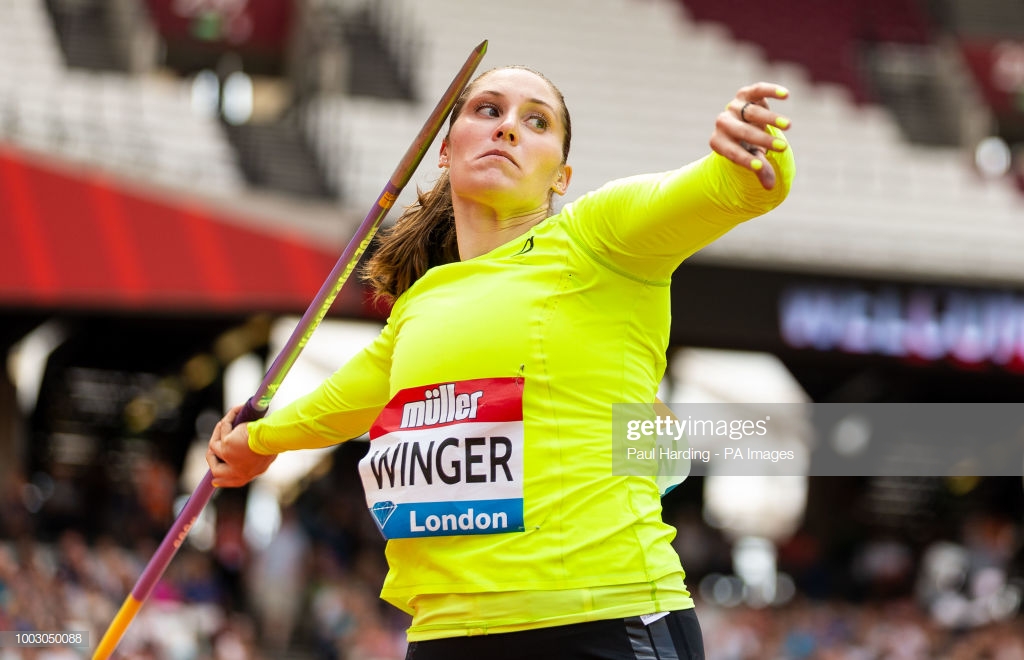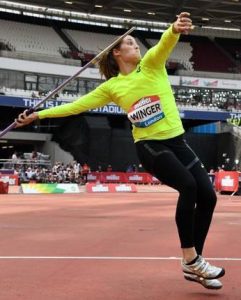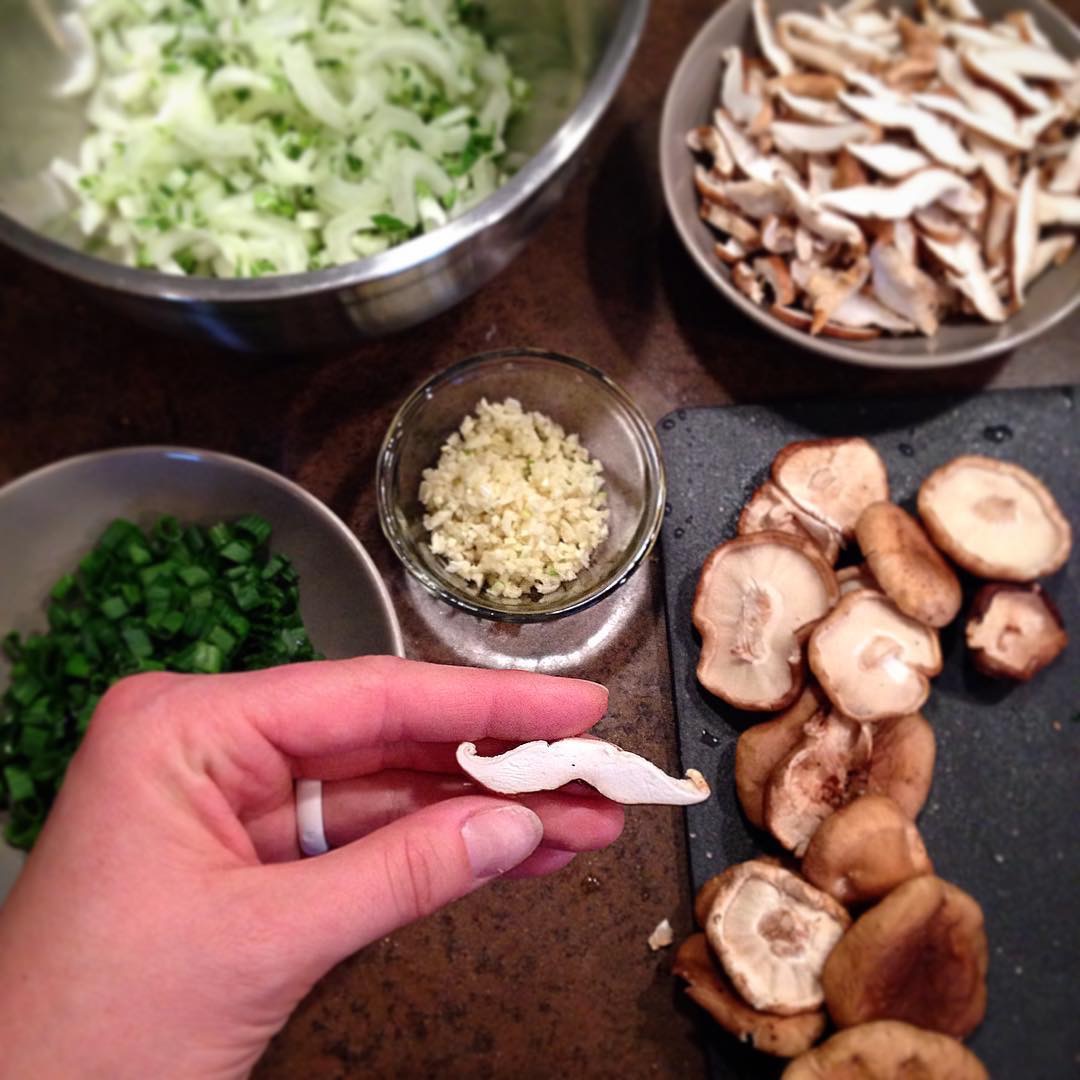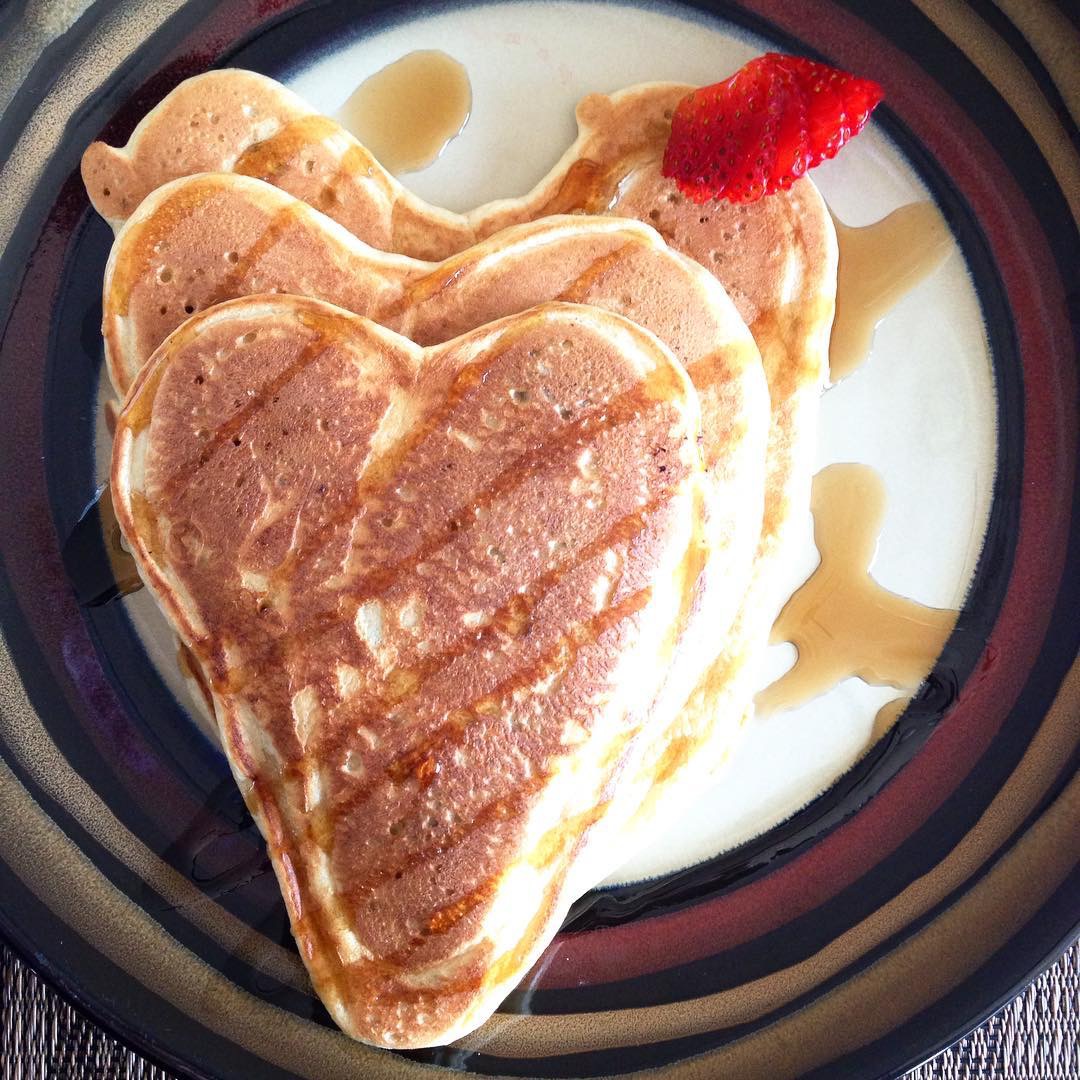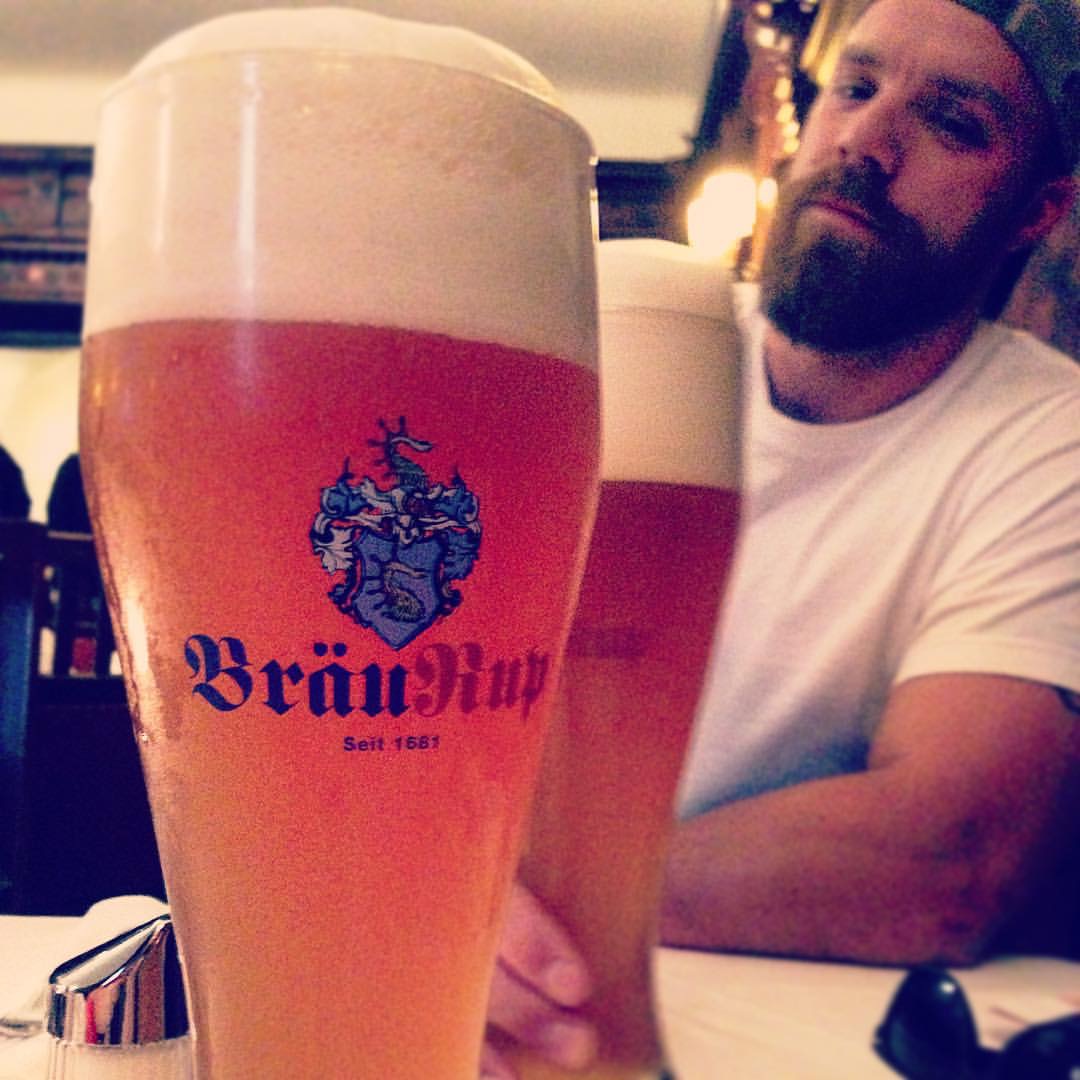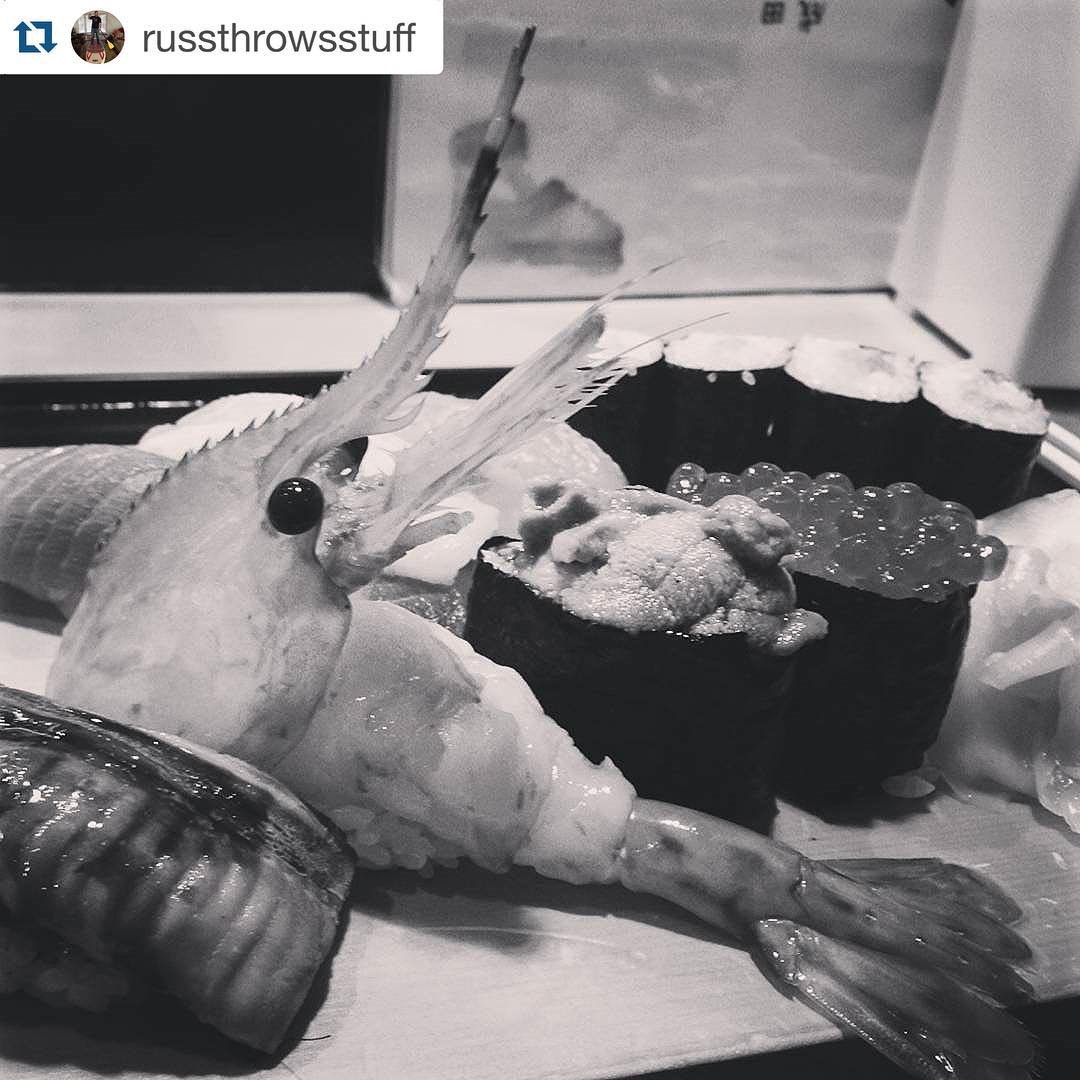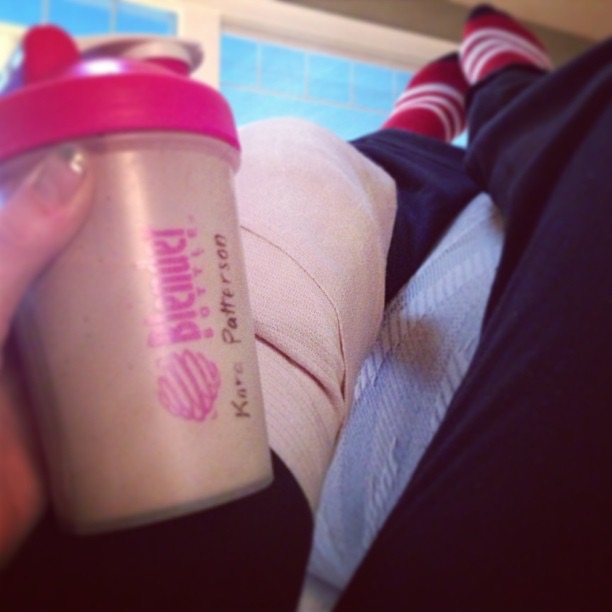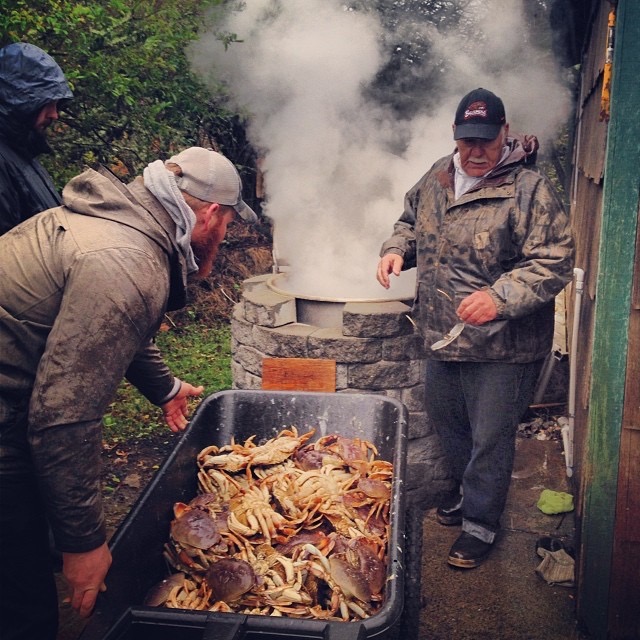“Did you ever work through a cycle expecting big numbers but they didn’t show?”
I felt really good physically, but not technically, in July. I trained well and hard when I got home from Europe in June (after a little bit of a weird calf strain to start my season), then traveled back to Europe for Lausanne, Luzern, a very small meet in Prague (Kladno, actually), and London, before coming back to Iowa for USATF Nationals. Physically, I felt great. Technically, I was a little lost, but knew I was closer than I felt. Mentally, I was a mess. Lonely, trying to visualize perfect technique twice a day without having a clear picture of what that technique was, which just made me frustrated and beat down confidence-wise. My expectation (to answer your question) was really far throws based on how I felt physically, which just made my disappointing results in July all the more devastating. July was my dark time this season, but ended so well at USATF Nationals, being reunited with so many people that I love (Russ, Maddie, my family, Dana, Britney, Ari, and a just tidal wave of amazing throwers…current athletes, retired former teammates, and coaches that I’ve known for a long long time). That week started my shift in focus that set up the rest of the season.
“What is your main goal?”
A fantastic fourth Olympic Games.
“How often do you train a week?”
Any given week, I’m training six days per week, but the time of year dictates how long or heavy those training sessions are. Jamie has me throw something three days a week (either two ball days and one javelin day or two javelin days and one ball day), lift twice, and do recovery stuff/gymnastics/endurance-ish things, or whatever on Saturdays. During kinda the middle of 2019, I got really sick of ball days. Honestly, I have always hated them a little, but that feeling really strengthened this year. It’s a lot of volume, and I just wasn’t feeling like I learned anything during those sessions. After talking to Jamie about it (I’m so happy I can be so honest with him), we shifted the plan to ball/drill day. Dagnabbit, if that wasn’t what he had in mind in the first place! So wise. It is SO FUN now for me to think about what has been deficient in my throw recently and plan drills for each block’s ball days to address those issues.
SO, javelin days are pretty straightforward (footwork and throwing, mostly), ball days are a bit more involved (balls are easier on your arm than a javelin so more volume is possible, plus I like to really hammer the drills if it’s the right time of year to do so) and I sprint on those days, too. Lifting days feature either Olympic or Squat-ish lifts and lots of core (I added more core to my regular routine about halfway through this season, too). Saturdays/my recovery day vary based on how my body is feeling in each block, but almost always have an interval jog or a swim, core, and any rehab-ish movements I need. I also like to swim laps after javelin day: The weightlessness, long flowing arm movements, bilateral/crossbody action, and solitude put my body back together after throwing and allow me the mental quiet to really lock in technical things that we worked on that day.
“How did you take what you learned at USATF outdoors then move forward to World’s?”
When I was still in Europe (Prague and then London), I was wracking my brain about how to freaking relax my body and mind. My thoracic spine was just wrecked and tight all the time, and when you’re traveling meet to meet it’s difficult to get regular treatment. I also was just WORRIED constantly. That’s not like me, but I know that people change and maybe I needed to try something new. I made appointments when I was still in Prague for massages at a great place in Des Moines after combing the internet for a therapist I thought I would like (she was EXCELLENT). I had a total of three hours with her between Monday and Wednesday of USAs week, haha. I also made my very first appointment to float. In a sensory deprivation tank. For an hour and a half. Fadeaway Flotation was awesome. I absolutely loved the experience, and when I got home to Colorado, I found a place within five minutes of my house that I promptly got a membership to. Whenever I was home in August and September, I made hour appointments any day I could fit them in.
I’ve already mentioned that I was overjoyed to reunite with all of my people after being alone a lot of the season prior to USAs. I also had incredible experiences abroad like I always try to (I truly love this global life and the fantastic women I get to be friends with), but for some reason this year, I just needed to be home more. Kick-starting that with a great, fun time at USATF Outdoor Nationals was a good place to start. Having conversations with Dana about just feeling my feelings, getting angry if I needed to, and letting out whatever frustrations had built up over the first part of the season was also huge. My only throwing session at home between Nationals and Pan-Ams was SO fun, not because it went well the whole time, but because I finally just felt whatever I needed to feel. I tend to try and talk myself down from whatever disappointment or frustration I have going on: “It’ll be okay,” “Just stay the course,” “Don’t be dramatic.” But sometimes it’s fun to yell. One or two sessions a year, I fall on the ground in anguish after a terrible throw. I hadn’t lost it yet in 2019, and I finally felt free to.
I also was, again, super honest with Jamie about wanting to be mentally challenged in my training just a little bit more. It felt to me like javelin was the scariest thing I did physically up to that point, and I like the challenge of asking more of my body in different ways so that I’m not ONLY pushing the envelope when I pick up my implement. So he programmed box jumps for supersets in some of my lifts. Then it’s up to me just how brave I want to be in another area of training, so that being brave in the throw is easier. That sounds kind of dumb? But it changed soooo much.
Pan-Ams, though, was at the end of the training block that included Nationals. So nothing changed physically between Nationals and one of the best series of my life in Peru. My one dramatic practice at home showed me how to finally move through the throw again and keep my shoulders level (I’d had too much lean back up to that point, especially in Des Moines), and my very last practice on Wednesday of Pan-Ams week in Lima was when I reverted to my old grip! So I learned at USAs that I needed to freaking relax/let myself live my life, that I absolutely love being around my friends and having a great time with them, and that small changes in technique could mean big changes in performance. Then I acted on those things for the rest of the year. SO FUN.
“What is the biggest thing you learned this year?”
I think to capitalize on my own time. I stopped letting people waste mine as much, and started using it for detailed things that made me feel strong.
That’s taking ten minutes at the end of practice to stay and do core. That means removing myself from my home if Maddie needs too much attention that day and I need to get something done (as much as I love her). I love packing three bags for a day away from home, when I have training, a lunch, and maybe a tour at the Olympic Training Center, or helping Dana at USAFA. I’m done letting people suck energy from me and all about being around those who fill me with it and vice versa. I used to spend a lot of time being careful to preserve my alone time at competitions and needing to make sure I got “the right kind of rest.” That’s silly and stressful in itself! I love so much more laughing constantly with friends on teams, knowing that the bonds we share go so much further than track and field, but that we’re helping each other in that arena, too.
I just think I learned to trust myself. That started in 2018 when Jamie, Dana and I teamed up and I was writing my warm-ups and being relied upon to give more input on my training than I had ever before, not knowing if I was up to the task. It continued this year when I made decisions to step back from relationships that didn’t serve me and listen to my instincts. And I can’t wait to continue that trend with amazing people by my side.
“How do you work around chronic pains or overtraining issues?”
My most frustrating and nagging chronic pain for the past four or so years (since my left shoulder surgery/the 2015 season) has been thoracic spine tightness and associated muscle spasms when I don’t pay enough attention to it.
I’ll be a little run down, have not slept enough recently, or am just not paying close enough attention to details like foam rolling at night or specific thoracic mobility exercises. I’ll have done too many throws without undoing the unilateral stress by taking a swim. Any number of things can throw my thoracic spine/ribs out of whack, and then one incorrectly-sequenced pull or slightly too-heavy bench in the weight room sidelines me for about a week.
I have to rest. This issue probably happens three times per year? And usually I push it to return too quickly the first time, so I’m on minimal training for more like two weeks until I actually recover. After about three days, my back relaxes enough that I can do light lifting, strides, maybe footwork, and possibly seated medball throws. About a week after a spasm, I’m able to get back to throwing balls or javelins, but I do extra warm-up work and keep the intensity down until I feel 100% again.
Chronic pain or overtraining means you need rest. You can still do things that are physical, but you have to move away from the things that are causing you pain and suffering. Go in the hot tub. Run on the beach if you have one. Go for a hike. Do yoga. Better yet, if you live in a cold place like me, do hot yoga! One simple week of down time WILL NOT derail your fitness or your season. Dan O’Brien told me once, “Sacrifice the day to save the week, the week to save the month, and the month to save the season.” I have never forgotten it, even if I’m stubborn the first time I’m confronted with that choice. I take the opportunity to cook better meals for myself, cuddle with my dog and husband more, and focus on things other than javelin when I feel this way. Then, when I can do javelin things again, everything is fresh and ready to go.
“How to keep and format a training journal.”
This is personal preference! I have been using this training journal for the last two years, and while it’s written for runners, the idea that you have limited space to write each day, but opportunity to reflect on bigger pictures periodically is really great for me. I haven’t been good at limiting my wordiness in the past, so being forced to be brief and to-the-point works really well for me.
This year, I’ll be using Brenda Martinez’s training journal! Same concept: Dates you can fill in, enough space to record what you did that day (training and otherwise), maybe rate the effort, and then move on with your life is great. I never want to get bogged down with a training journal’s moodiness. If I do, I’ll stop doing it. But that’s also individual.
My entries include:
1. Date
2. Type of training (ball day/javelin day/lifting day/recovery day/off)
3. Happy/sad/whatever face ranking
4. Key technical things that I loved or want to improve on. I have volume and intensity and actual weights used (implements or weight room amounts) on my training pages so I don’t bother to do that twice. I can cross-reference by date if I need to.
5. Other stuff that I did that day, including sports med treatment, tours I give maybe, social stuff, and perhaps a fun thing with Maddie (lake trip, long walk, etc.).
“What are some key points that led to such a great year for you?”
Jamie Myers and Dana Lyon, and the mutual trust that I have in them and they in me. Friendship, both domestic and international. Love and realistic, honest support and feedback from Russ. Having a teammate who is one of my very closest friends and pushes me personally and athletically. The opportunity and wake-up call to focus on Pan-Ams, The Match, and World Championships after not collecting enough points to qualify for the Diamond League Final. Agents who have been so incredibly supportive and understanding for ten years. The bravery to say no to a sponsor relationship that no longer served me, and ultimately led to new ones that feel much better in my life.
“How you trust in the process of the season as a whole! Especially in fall haha. 😊”
Focus on little victories every day. Rehab from two different big surgeries really helped me learn this lesson in every day training as well. Even at the end of the year when you’re approaching the really big meets, you’re STILL not going to build Rome in a day. You can just build on what you’ve done in the days, weeks, and months before. That starts in the fall, so recognize one thing you improve on in each training day. Add one simple kilo to the bar on each power clean. Turn your right foot over the tiniest bit faster in each new javelin session. Keep your arm back one millimeter more. Hold a plank for ten extra seconds. Do SOMETHING that objectively tells you you’re improving, and trust that consistent work like that will take you so, so far.
The process of building day by day starts with having a big goal in mind, too. So figure out what that is, put it in measurable terms, and work with your people to establish steps that will get you there. If you hit a roadblock, readjust the steps. Any progress toward a huge goal is big progress, so recognize that fact when you hit milestones, and take the time to celebrate the small victories.
“What was your biggest focus with regard to your javelin technique?”
After USAs (and that one dramatic practice), I had three big things in mind.
1. Keep my momentum GOING, ALL the way through the throw. I accomplished this by thinking about squeezing my left butt cheek at the block and being sure to push BOTH of my hips into the throw instead of letting my body pike as I threw the javelin. I had some left hip pain that showed up in July and stuck with me, and actively using that hip was one of the only ways I avoided pain at the block actually, so luckily that also meant good acceleration all the way through my throw. The second half of this is trusting my impulse: I need to have a really strong last left strike to power through my impulse step and encourage myself to be patient in putting my right foot down and then driving that right knee to the ground to set up good timing and keep good speed. When my impulse isn’t powerful, I feel like I need to create speed, paw back at the ground with my right foot to do so (which is fake news), which then slows my left foot touchdown and makes my hips pike. Strong impulse, strong left hip and glute.
2. Level shoulders. I was leaning back too much prior to and at Nationals, and needed to level out my hips and shoulders so that I COULD accomplish the efficient acceleration mentioned above. When you lean back too much in the name of keeping your throwing arm long, it’s much easier to slow down through your crossovers and let your right-to-left timing be slow. That’s what was happening to me, so then I was open at release and shortened my pull drastically. Leveling everything out let me feel athletic and powerful all the way through the throw. Part of accomplishing this was reaching past my right SIDE with my left arm rather than as drastically up and obliquely to stay closed. I swung my left arm aggressively ACROSS my body instead of letting it drift up. The double whammy was that this action let me stay closed longer, especially when I was accomplishing point one well.
3. Kind of an appendix, but a fun story and not a coincidence as far as success and turning my season around: I went back to the European grip. I tried the American grip all season, through Nationals. I really liked it for controlling the tip of the javelin, and I threw pretty far using it, but I just didn’t feel like myself. It was really, really hard for me to relax and feel any length in my arm with the American grip. I was tighter through my shoulder in that very slightly different position, and my elbow felt the pressure in different ways than I was used to. In that one dramatic practice between USAs and Pan-Ams, Dana actually said out loud what we had both been thinking for a while (that I should go back to what I know and love). I did, and after one practice, felt completely like me again. A crazy confidence boost.
“How did the overall season go and what is a major change you want to be doing.”
Loved this season for all of its richness. Was fairly devastated and ready to just enjoy being with teammates and cheering them on when all of a sudden my fortunes changed with just a few thoughtful adjustments. Then had my best results ever internationally.
I want to lock in the technical things I just mentioned for next year. I felt like I was just barely getting a grasp on using those repeatedly at the end of the year, and then the nerves of Worlds got to me and I didn’t execute them at all in Doha. It was really neat to still do well despite falling apart a little technically, and that would not have been possible in the middle of the season. So I want to really cultivate this attitude of gratitude and intention and Friendship with teammates and my coaches, continue to work hard and smart, and actually execute technically while having a blast in Tokyo.
“What do you attribute to your success in the bigger meets this year? (Match and Worlds)?”
Mentality. Have a blast with friends. Be a good teammate. Know that they’re going to do well and that it’s fun if I do well, too. Represent the people I love well. Recognize that I’ve put so much in to this career and that there’s no reason it shouldn’t be fun and go well, especially now that I work with the right people. WHY NOT SUCCEED.
Also re-discovering good technique, especially for Pan-Ams and The Match. Like I just said though, I felt like that fell apart at Worlds, and that my success there was so largely based on Jamie preparing me so well for it physically. Obviously I had some remnants of the technique I’d been using, but it could have been soooo much better. I’m hungry for more. 😊
“You are great thrower”
Thank you, all of you, so much.







